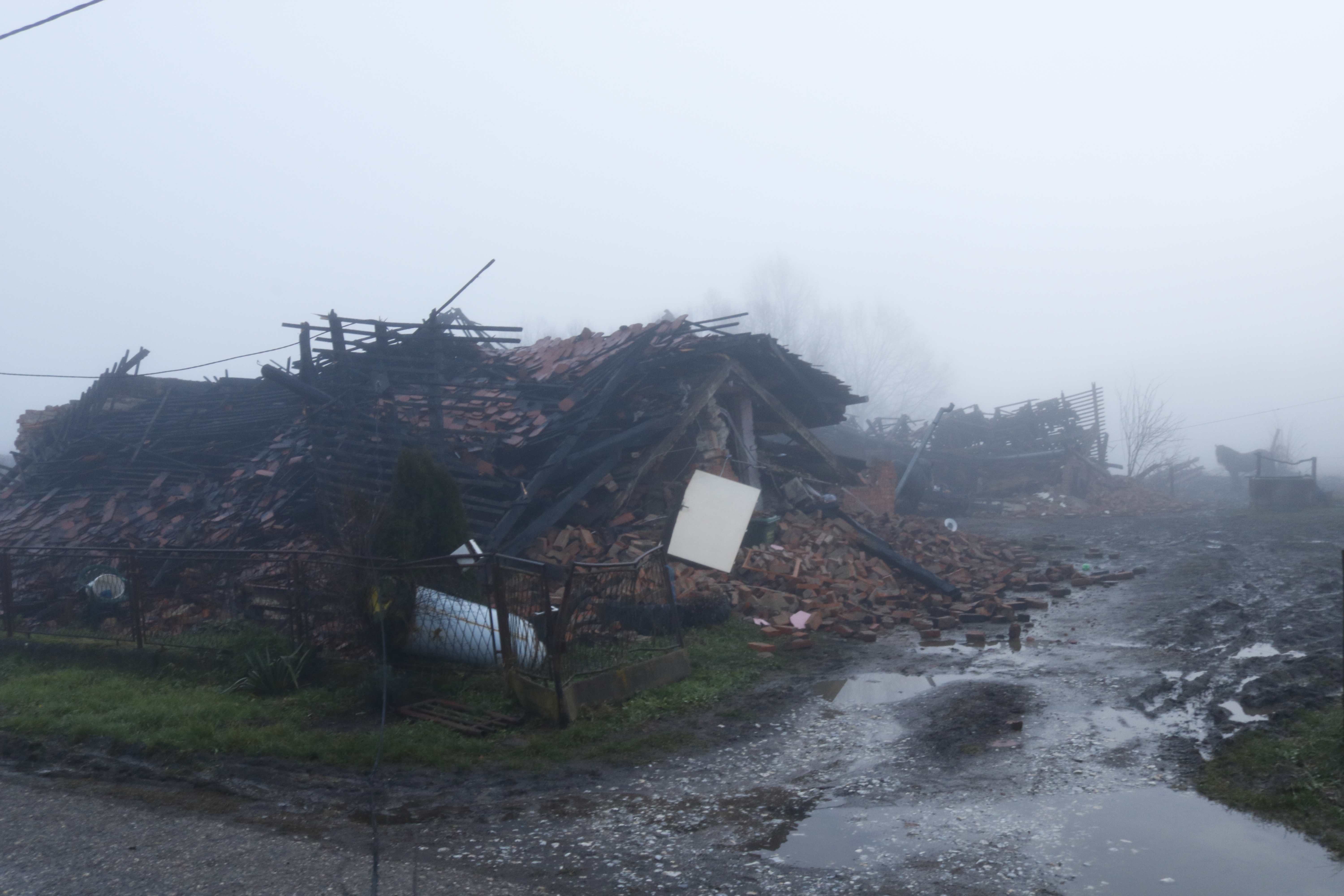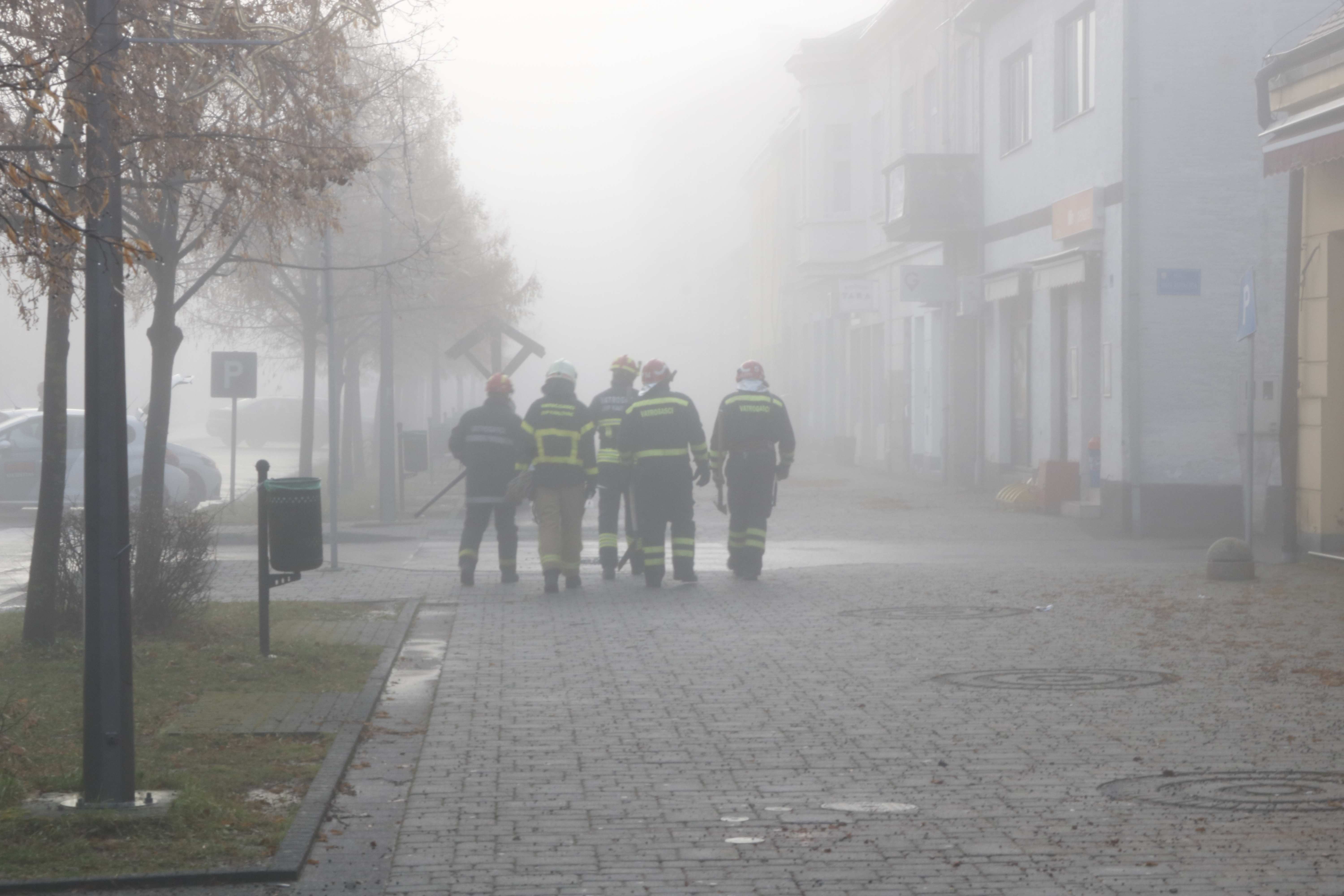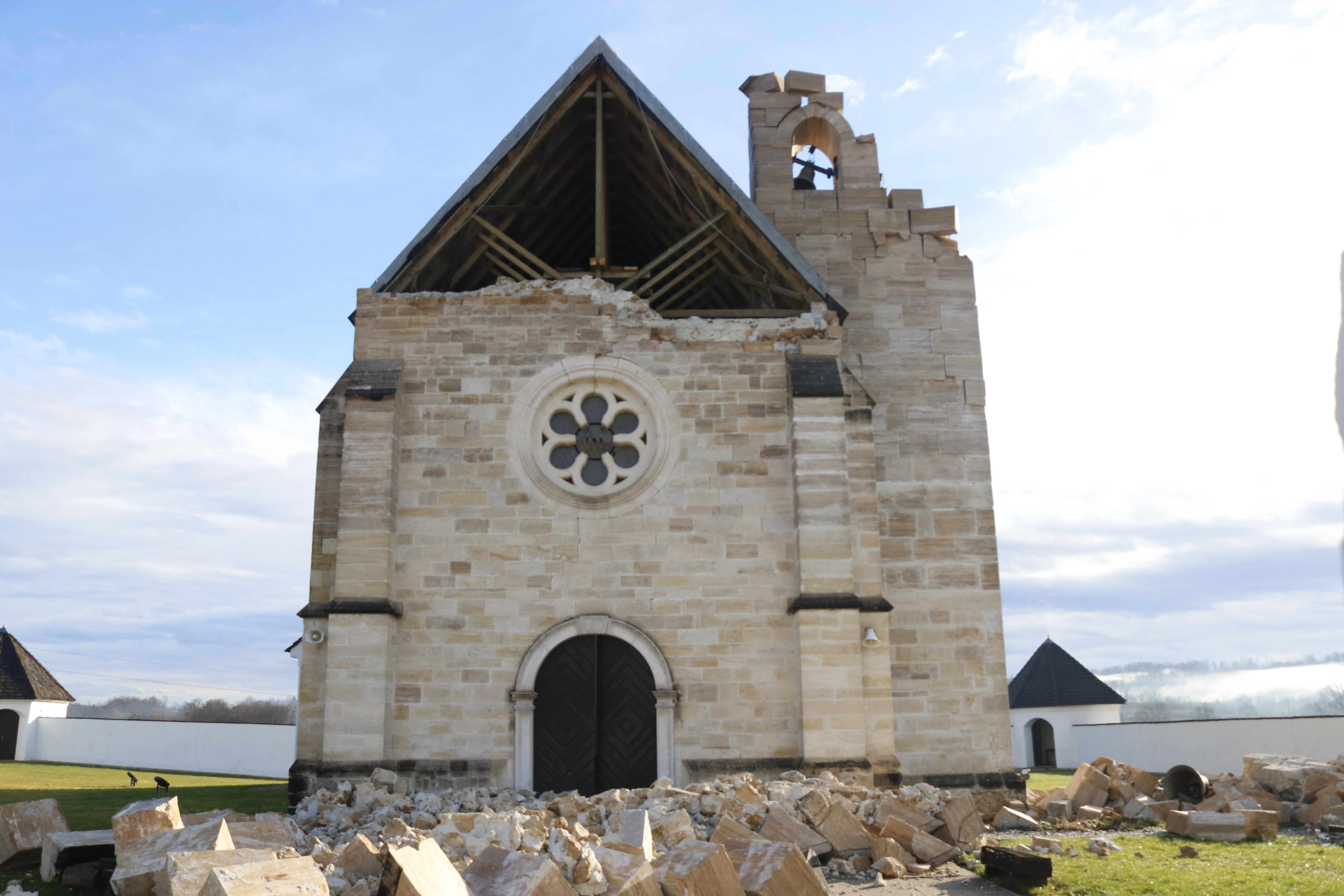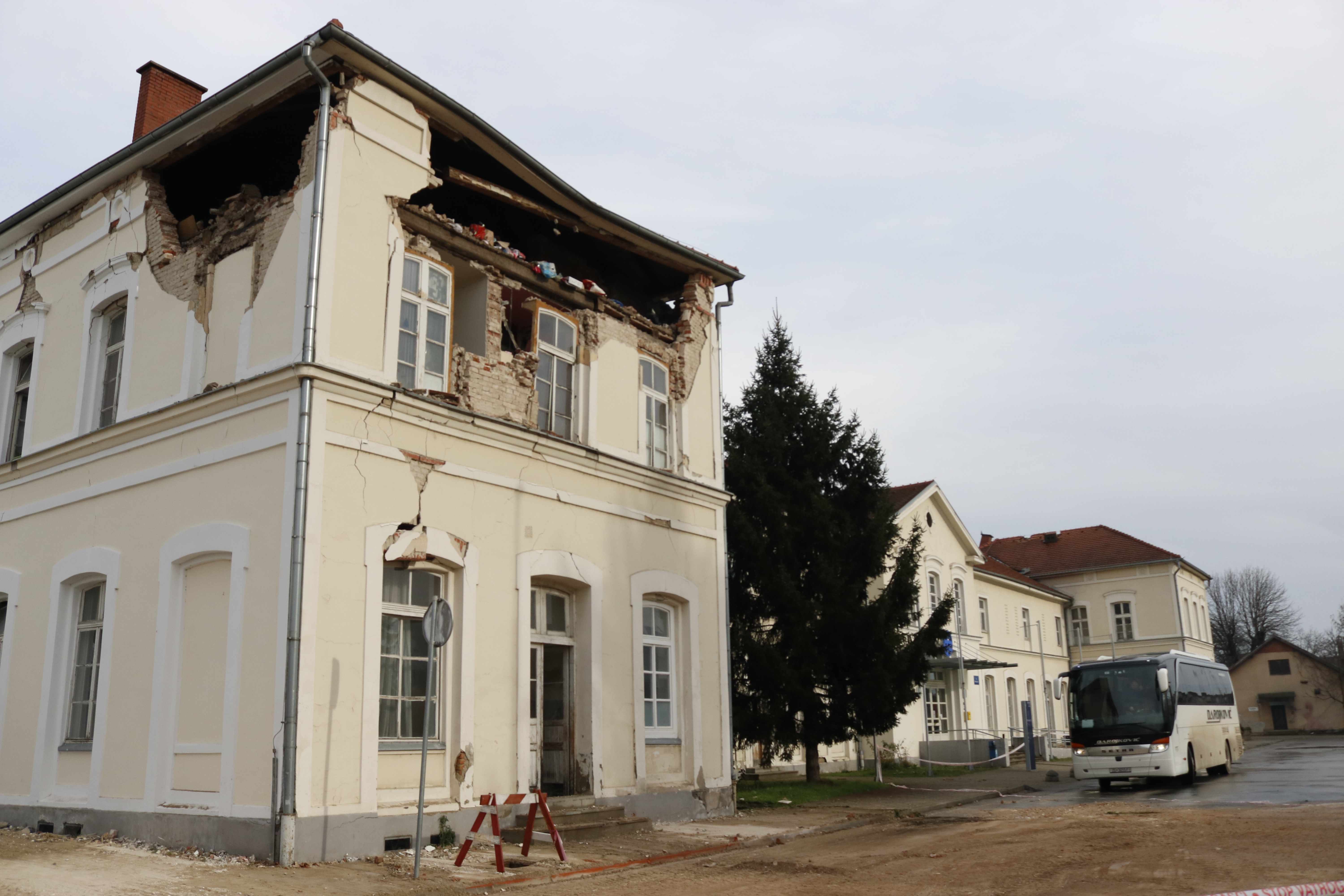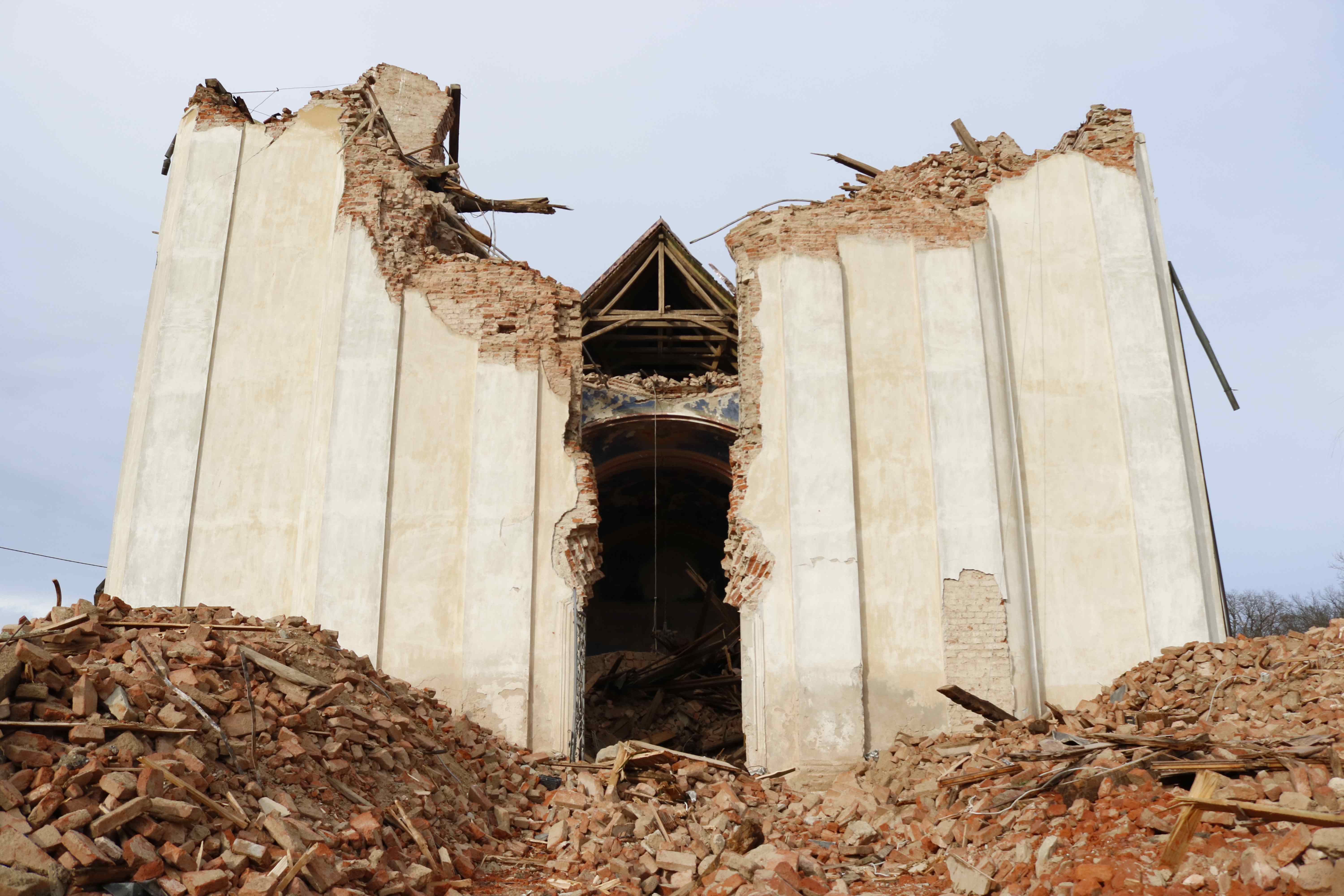Official: Croatian Red Cross Has Collected €4.8m in Donations for Quake Victims
ZAGREB, 2 January, 2021 - The Croatian Red Cross executive president said on Friday that this charity had to date collected HRK 36 million in donations for people who were left without their home in the 29 December devastating quake which struck the towns of Petrinja, Sisak, Glina and other parts of Sisak-Moslavina County.
We continue receiving donations, the executive president Robert Markt told the Nova TV commercial broadcaster on Friday evening.
Asked why some people whose houses were damaged had not yet received containers or mobile homes to sleep in, Markt explained that the quake-hit area covered over 1,000 square kilometres and 305 settlements and this dispersion of settlements could be a reason.
He said that currently, there was no need for new volunteers but in the coming days they would need fresh force.
"This is the operation that will last long and I would like all interested to apply in a few days, we will include them in the operation."
"We all can be proud of our Civil Protection services, and our system of Homeland Protection," said Markt in his comment on what has been done in the first 72 hours since the devastating quake.
Croatia-Shaped Cloud Appeared in the Sky Above Sisak After Quake
January 2, 2021 – Shortly after the terrible earthquake that hit the area of Sisak-Moslavina County, the sky above Sisak sent a symbolic message – a beautiful cloud that looks like Croatia on the map appeared above the city!
In the moments of the terrible earthquake that hit Sisak, Petrinja, and surrounding places on Tuesday, which damaged over 2000 houses, an unusual cloud appeared in the sky above Sisak. Few people managed even to notice it, but one child realized – the cloud is in the shape of Croatia on the map. His sister hurriedly captured the moment – she took a photo of the symbolic cloud, which was later shared across social media.
Their mother, Antonija Kmetović, first posted the photo on her Facebook profile. She explained to Jutarnji list how they survived the earthquake and how the significant photo was created.
"We were in the apartment during the earthquake. Everything was breaking, moving, shaking, thundering. The four of us were falling over. We clung to the door frame and begged it to stop. It seemed like an eternity. When it stopped, collapsed closets clogged our hallway. We barely got out, barefoot, hugging, and crying. I left my mobile phone to my children and ran to the apartment to get jackets and shoes. They were standing in front of the building with their neighbors while my husband was removing the closets so that we could walk through the buried hallway," Antonija describes the horror moments they survived in the quake.
"My son saw strange clouds. He is studying geography, so he is interested in maps and longitudes and latitudes. So my daughter immediately photographed the sky. There is no filter or editing. Pure gratitude that we are alive and that we managed to escape outside, that it stopped shaking," says Antonija.
Shortly after the earthquake, she posted a beautiful photo of a cloud in the shape of Croatia on her Facebook profile with the description "God, save Croatia." Their apartment cracked after the devastating earthquake, but she and her family are okay. They are happy that nothing happened to them.
"The apartment cracked, but I think we were fortunate that the building was well built, even though it is over 60 years old. When I see what happened to others, this is happiness to heaven," concludes Antonija.
For more on the Petrinja earthquake, follow our dedicated section.
Symbol of Hope: Croatia's 1st Baby in 2021 Born in Sisak, Family from Petrinja
January 1, 2021 – In the sea of sad news for one Petrinja family, whose house was demolished in an earthquake, a positive one arrived in the first minute of 2021. They welcomed a new family member – the first baby in 2021 in Croatia, born in Sisak Hospital.
The deputy director of the Sisak Hospital, Marin Repustić, who was on duty last night, shared the happy news on his Facebook account.
"I have to post this. On January 1, 2021, at 00:01, a baby was born in the Sisak Hospital. Our city still lives," wrote Repustić in his statement. He confirmed the news for Index, which quickly shared the happy news.
"Fifteen seconds after midnight, little Daris was born. It is very symbolic that he was born in Sisak. Mother and baby are fine. We are all overjoyed because everything went well. A baby was born in that part of the maternity ward that survived the earthquake," Repustić told Index.
A few days ago, the family was left homeless in the 6.3 magnitude earthquake that hit Petrinja, Sisak, Glina, and many other places and villages across Sisak-Moslavina County.
"The lady is from Petrinja, this is her second child, and their house was demolished in the terrible earthquake. After the earthquake, she slept with her family in the car," Repustić said.
Numerous Croatian residents enthusiastically commented on social media that this is a good sign for their entire region after the suffering they have been going through in recent days.
"Dear colleague, this status is the best New Year's card/news. Sisak is being born, rising from the ashes. Happy New Year 2021, congratulations to parents, quick recovery to mother," reads one of many comments.
More information will be published soon, and everyone who wants will be able to help this family from Petrinja, which became richer for a new family member by entering 2021.
For more on the Petrinja earthquake, follow our dedicated section.
Beroš: Record Blood Donations Yesterday, Over 1000 Vaccine Doses for Petrinja
December 31, 2020 – Health Minister Vili Beroš commented on the record blood donations collected in Petrova Hospital in Zagreb yesterday and coronavirus vaccine doses sent to the quake-affected area.
As N1 reports, in front of the Dubrava Hospital, where some COVID positive patients arrived from the earthquake-affected area, Health Minister Vili Beroš commented on patients' situation after the earthquake.
Record blood doses after 1995
"This morning, I received information from the Croatian Institute for Transfusion Medicine that yesterday, a record number of blood doses was collected in Zagreb's Petrova Hospital, over 750 doses. The last time we had a similar turnout was August 5, 1995, the beginning of the Storm war operation. This shows the consciousness of the Croatian people," said Beroš.
"From a health point of view, this is a challenge. We want to provide health care to everyone. Given that most health facilities have been severely damaged, I believe we will respond adequately. As much as 90 percent of the Sisak hospital is out of order, so we have to adjust the health system and provide health care to the entire surrounding area," said Beroš.
He pointed out that many health centers are out of order. He also revealed that the Health Ministry sends about a thousand doses of vaccine to the affected area.
'Virus is still here'
"On Saturday, a team of epidemiologists from the Croatian Institute for Public Health will vaccinate all people who are in collective accommodation, emergency workers, and emergency services who are in the area and who will be there for three weeks, including all members of civil protection. Plans exist to adapt to the situation. Epidemiologists will estimate the situation and see how many vaccines are still needed. We are sending more than 1000 doses," said Beroš.
The Minister pointed out that there are enough reserves of protective equipment. He also said that the problem of drug delivery would be solved. Rapid antigen tests are being conducted among nursing home users in the area to find out if there are infections in collective accommodation.
"After the earthquake, Minister Aladrović contacted me. They enabled the accommodation for nursing home users from Petrinja in the Popovača Hospital and other places. There are positive cases among the users, so we are looking for accommodation for them with the county authorities. We still have to stick to measures, masks, distances, disinfection. The virus is still there. These circumstances favor its spread," said Beroš.
The Minister stressed that all health professionals with COVID patients must receive the promised money for the reward.
For more on the Petrinja earthquake, please follow our dedicated section.
Interview: HGSS Croatian Mountain Rescue Service in Petrinja
December 31, 2020 – Croatian firemen, army, police and medical workers worked through after the earthquake in Sisak Moslavina County on 29 December 2020. We wanted to get a sense of the demand on and the experiences of emergency services, so we spoke with Josip Granić. Head Of Service for HGSS, who was coordinating the efforts of the Croatian Mountain Rescue Service in Petrinja
This interview took place in Petrinja, just before 12.30pm on Wednesday 30 December 2020
Right now we have around 120 people here. Last night we sent some home. During the height of the operation, we had 192 members of the Croatian Mountain Rescue Service in Petrinja and the surrounding towns and villages. Firefighters and police from all over Croatia came. There are more than 200 army personnel here too.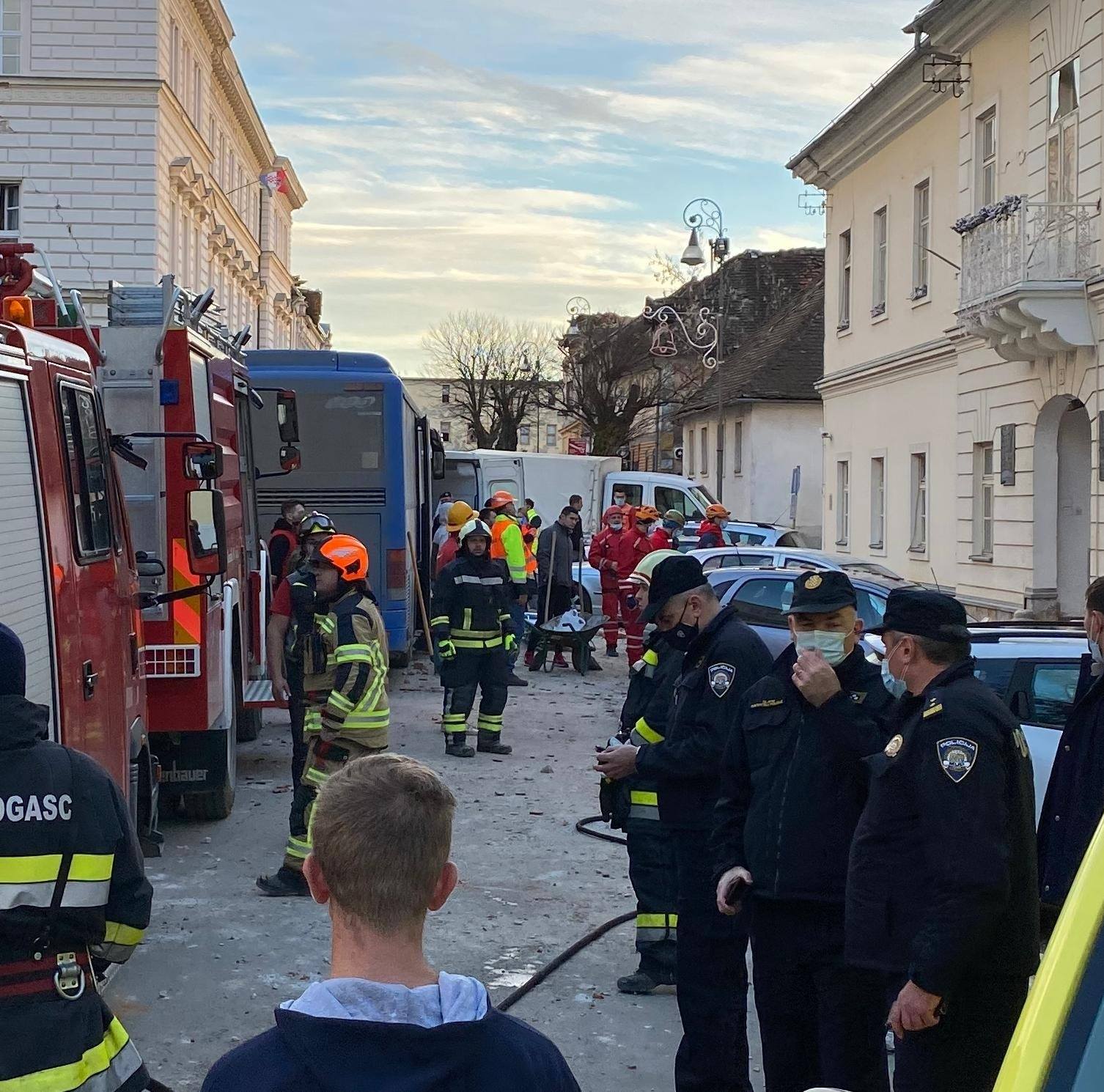
Because we are part of the operational team of the National Civil Protection, we were already here and involved in the response to the first earthquake. After yesterday's earthquake, I called each HGSS station across Croatia and asked them to prepare at least one vehicle and one team to come and join the Croatian Mountain Rescue Service in Petrinja. The first extra teams to arrive were from this county - Sisak and Novska. They got here around 2pm. Teams from Orebic, Peljesac and Split arrived maybe last, because of the large distance they had to travel. One team came by car, another came by helicopter.
What was the situation like for Croatian Mountain Rescue Service in Petrinja when the wider team first started to arrive after the second day's larger earthquake?
If I said it was chaos, that wouldn't be strong enough a word. The centre of the town was chaos. Everyone was busying themselves with responding – people were moving debris, firefighters were making their way through, ambulances and police moving through, people of the city in the streets helping out. The streets were filled with dust and smoke. You could hear the sounds of floors and roofs and buildings collapsing all around you.
What were the first undertakings for the Croatian Mountain Rescue Service in Petrinja?
Well, our first response was not only in Petrinja – we were immediately in some of the surrounding villages too. The very first thing we did was send in our search teams and the specially trained dogs we work with. We were instructed by locals. They told us which of the collapsed buildings were likely to have people trapped beneath them. We immediately found one person. It was in the town hall. One lady. The entire ceiling had fallen on top of her. Our colleague from Ogulin found her with his dog. The firefighters worked so fast, so hard to dig her out. They were excellent. It took four and a half hours to get her out. She was lucky. Unfortunately, we also found four more people who were already dead.
We saw quite a lot of volunteers. Who is organising them?
There are many different groups. Many local people were the first ones out on the streets, volunteering. Then, those from the immediate area came - four friends in a car, that kind of thing. |NGOs arrived next – veterans, charities and so on. Then, football fans from all over Croatia arrived. Supporters groups had organised coaches to bring themselves here. At first, nobody was organising them and it was a bit of a problem. They organised themselves. But, it was such chaos that some emergency vehicles, including search and rescue teams of Croatian Mountain Rescue Service in Petrinja, could not pass through the town. This is dangerous because, in search and rescue, your ability to respond quickly is vitally important. After dark, things began to run more smoothly. Many worked until 3am or 4am, then they were sent home. The ones who didn't arrive until much later in the night were incorporated into Civil Protection and assigned to work the next day in villages and towns outside Petrinja, where help was needed.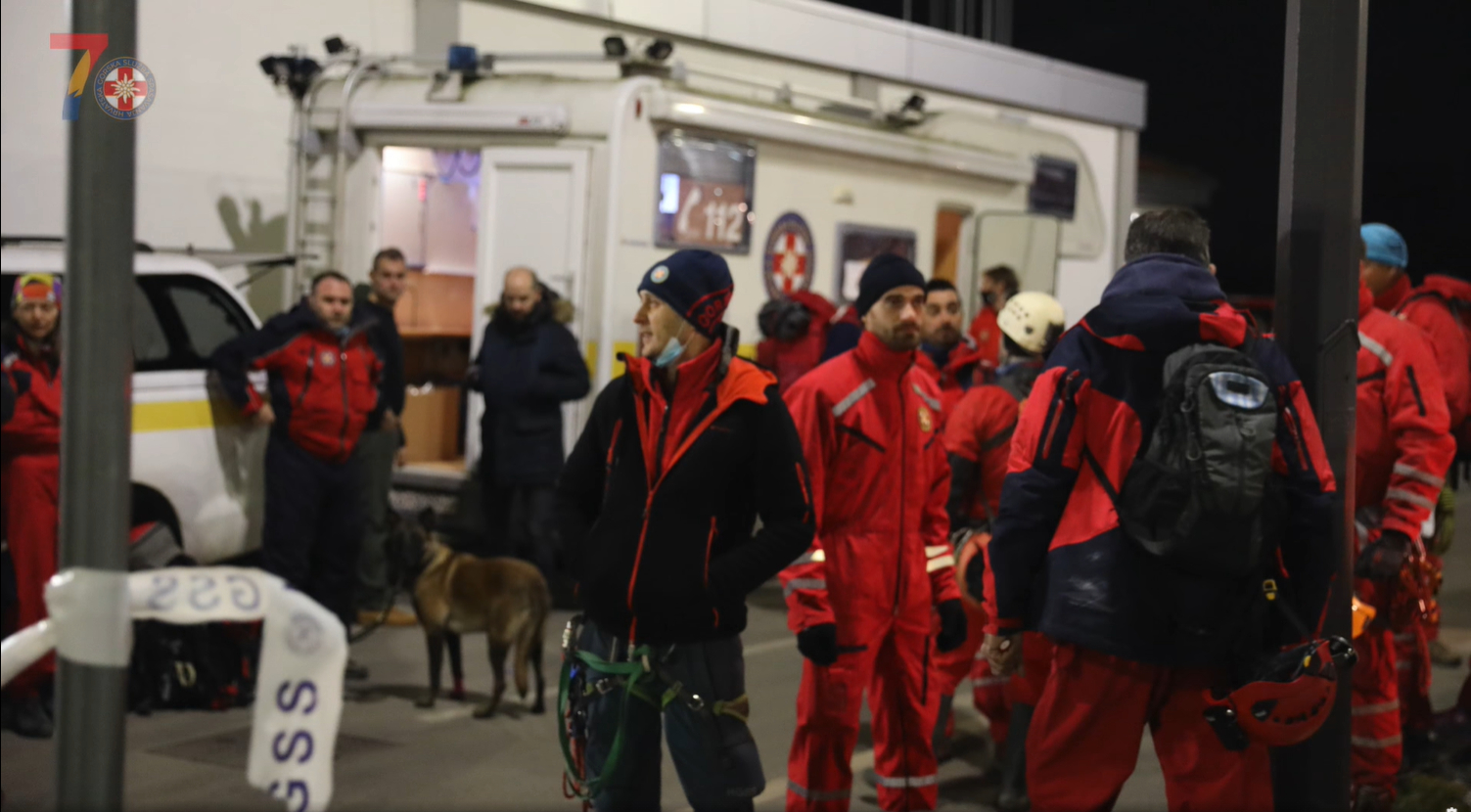
How has the demand on what you do changed since yesterday?
It hasn't changed that much. We have been visiting villages throughout the county as quickly as we can, searching for people who may be trapped. Some of these places have not yet been reached by the other emergency services, but they will get to them. We found another alive person who was trapped today. Since early in the morning we have searched 84 villages.
What advice would you give someone who wants to come here to volunteer?
Organise it first with Civil protection. If it is organised with them, then you know you won't be in the way and you will be going to where help is needed. If it's organised with them first, then come. There's a job for everyone who wants it here.
How different is the demand on emergency services in this earthquake compared to the earthquake in Zagreb in March 2020?
Well, our services were not requested during the Zagreb earthquake and a lot of that is because of the structural integrity of the buildings in Zagreb. Most were strong enough to survive that big earthquake. The ones which were damaged were only partially damaged. Many buildings in Zagreb were hardly damaged at all and so many people in Zagreb were relatively unaffected by that earthquake. Here, everyone is affected.
All images © HGSS
PHOTOS: Majske Poljane, Glina and Petrinja One Day After The Earthquake
December 31, 2020 – Total Croatia News visited Majske Poljane, Glina and Petrinja one day after the earthquake. It is difficult to find words to describe the devastation we saw. Perhaps pictures tell the story better
Majske Poljane

Majske Poljane is a rural community. Such was the devastation here, it was difficult to tell which of the destroyed buildings had yesterday been used for agriculture or if they'd been homes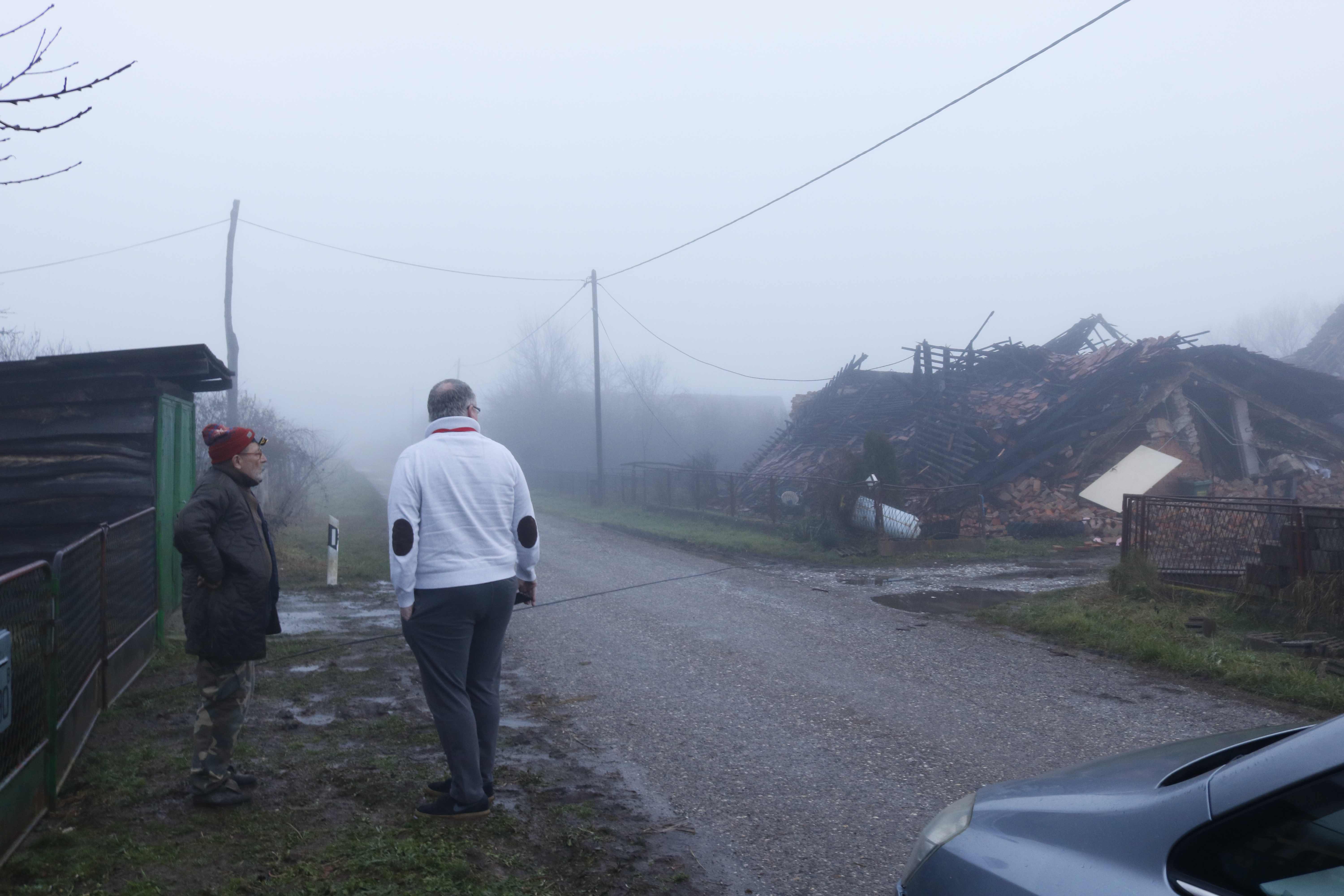
TCN's Paul Bradbury talks to Majske Poljane resident Vladimir who confirmed that, yes, the building across the lane had been a home, his neighbours had lived there just 24 hours earlier
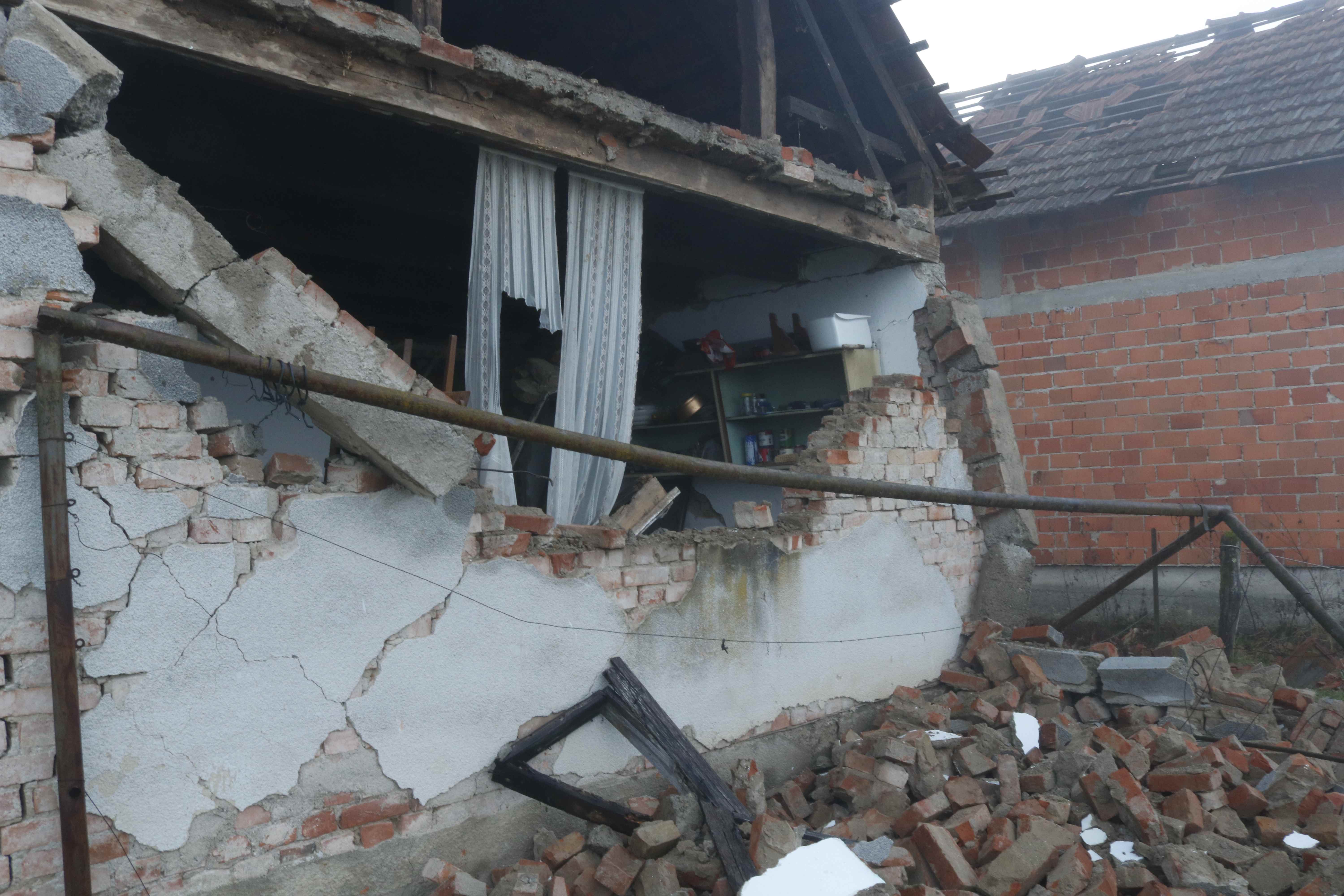
Doors of houses left ajar, windows collapsed, smashed and broken. Inside, you can see everyday lives, stopped suddenly, frozen in time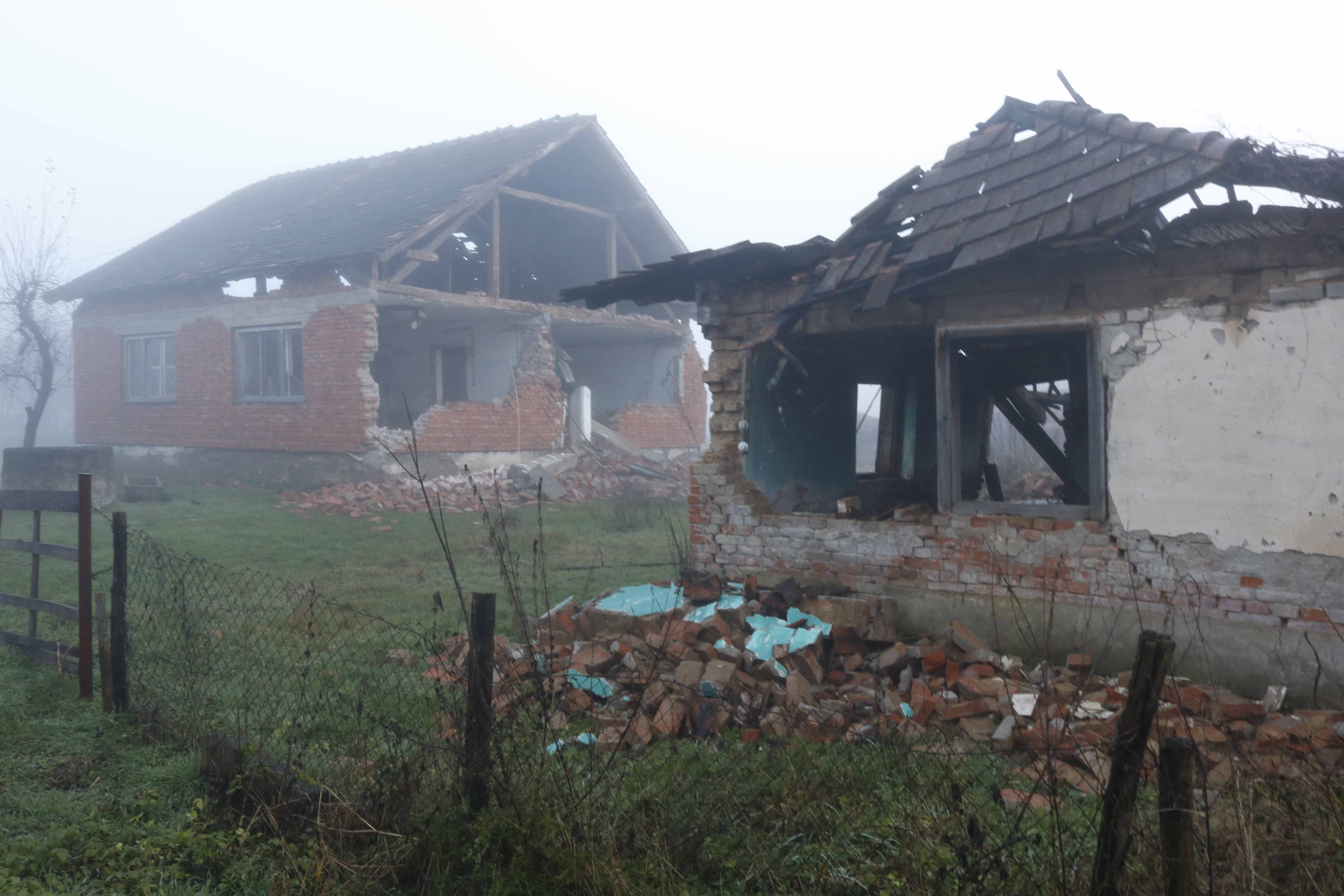
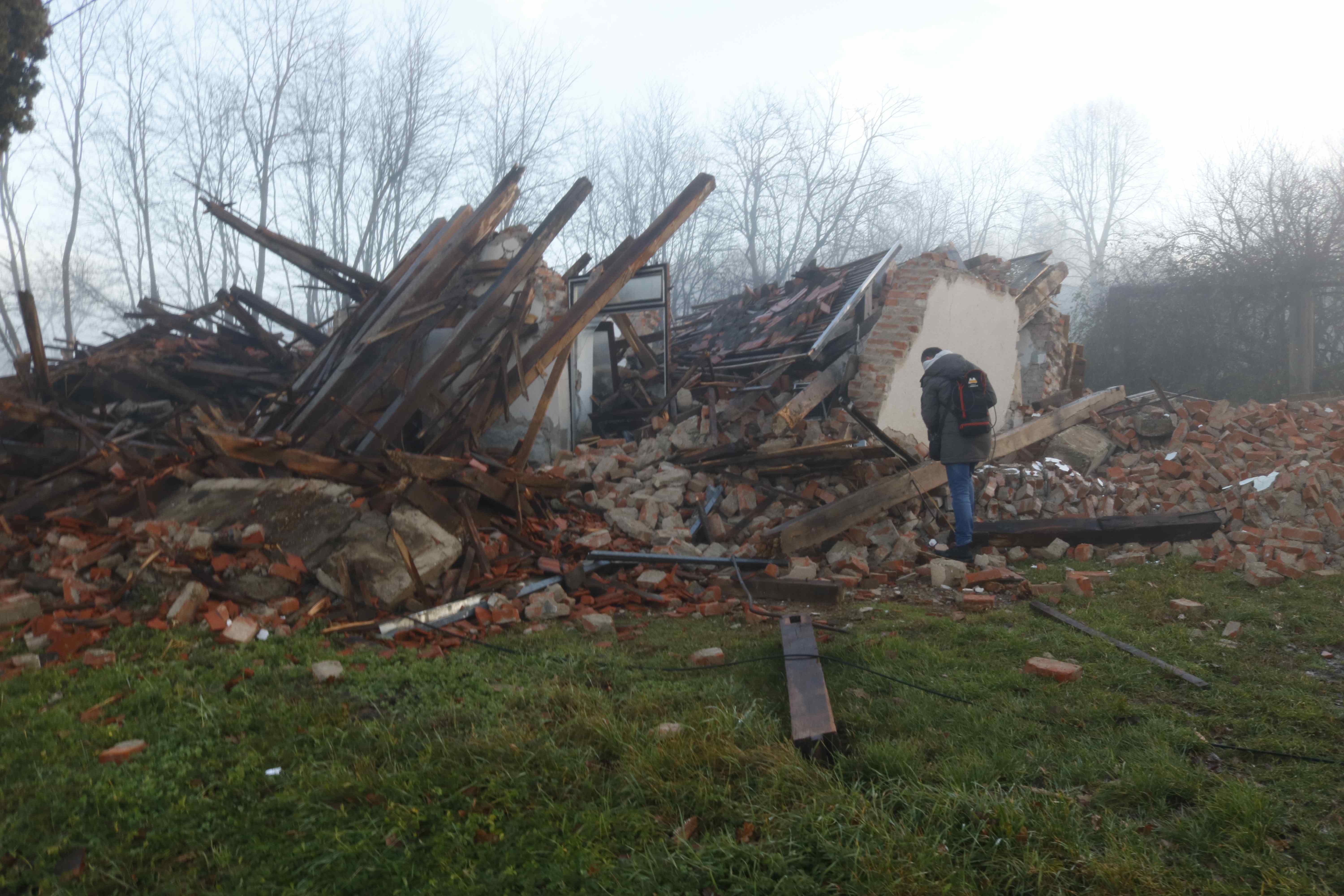
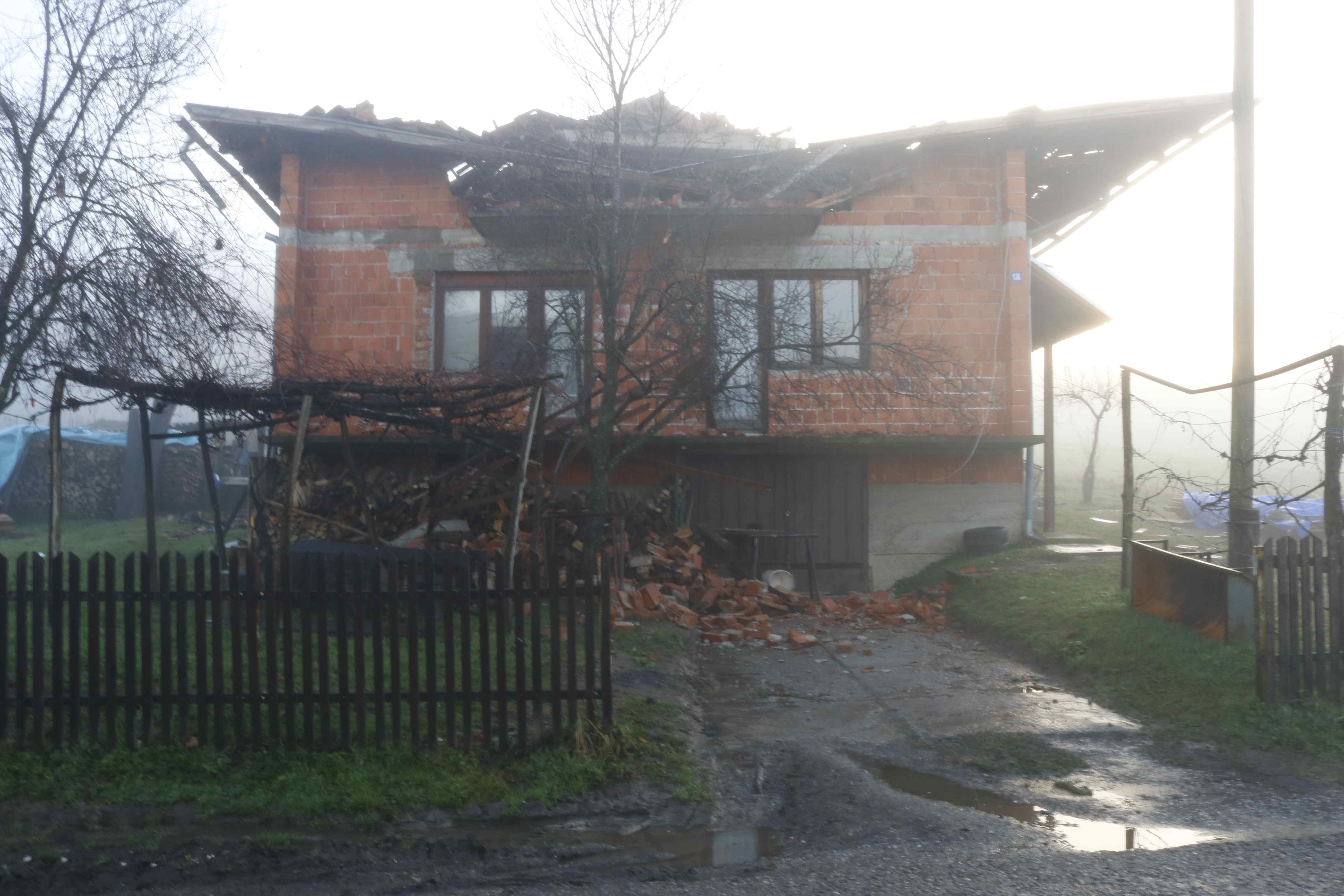
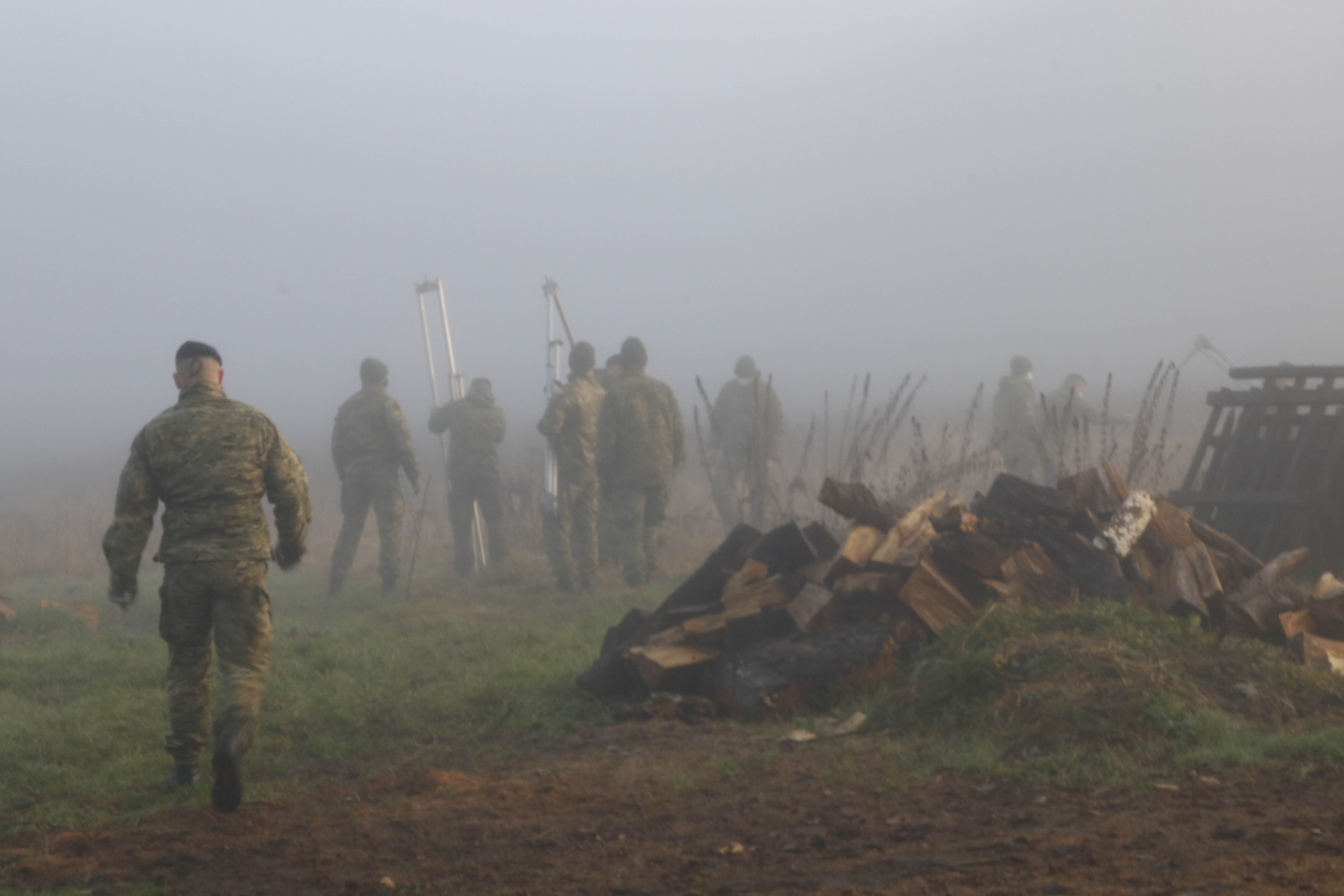
Croatian soldiers quickly constructing emergency shelters in the freezing fog of early morning. They came from all over Croatia. Unsure if their damaged houses were structurally safe, parents and children of Glina, surrounding villages and Petrinja stood in gardens and fields, keeping warm around fires. With no electricity, they cooked on barbecues.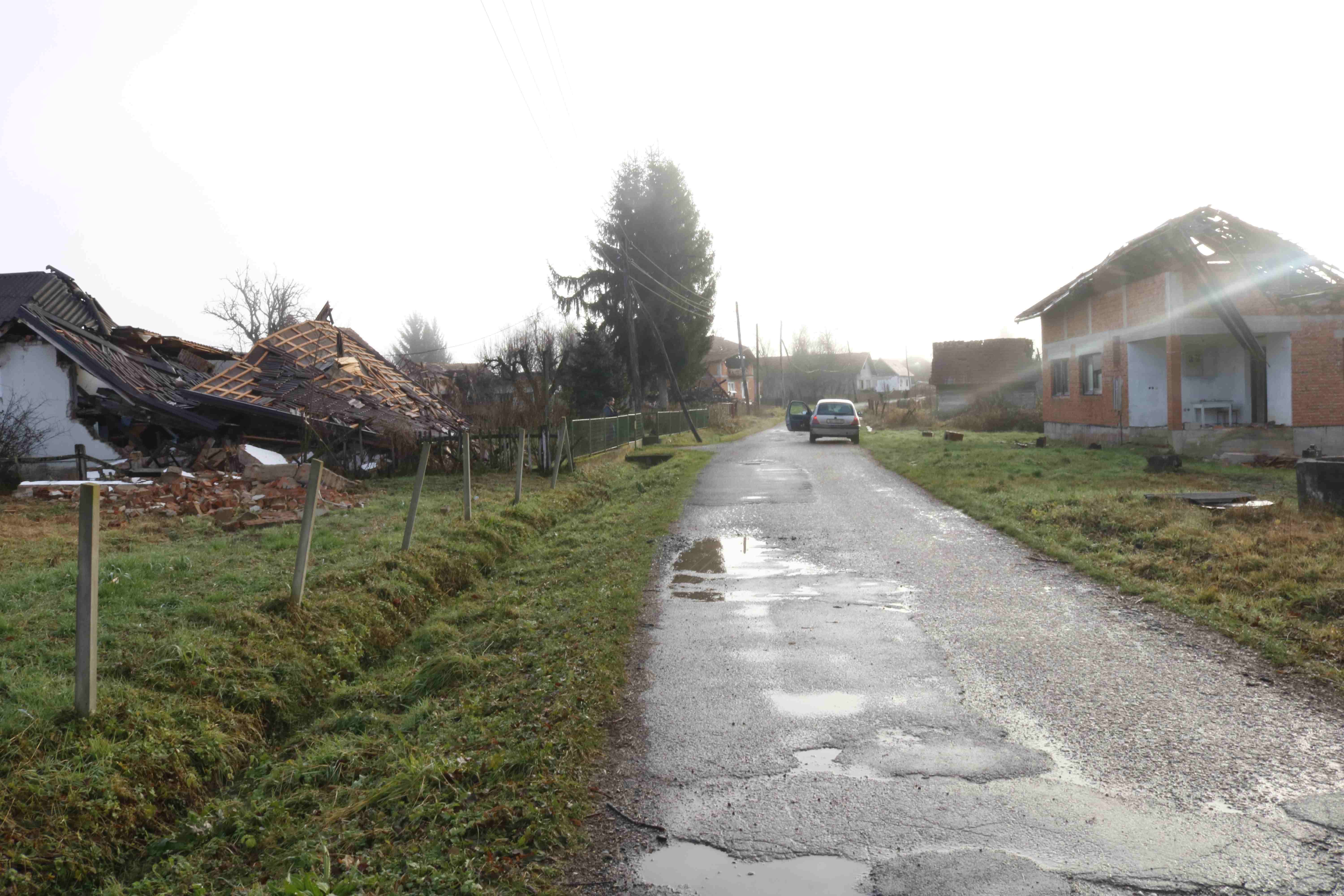
Majske Poljane seemed like the most silent place on earth. No single sound, not even bird song.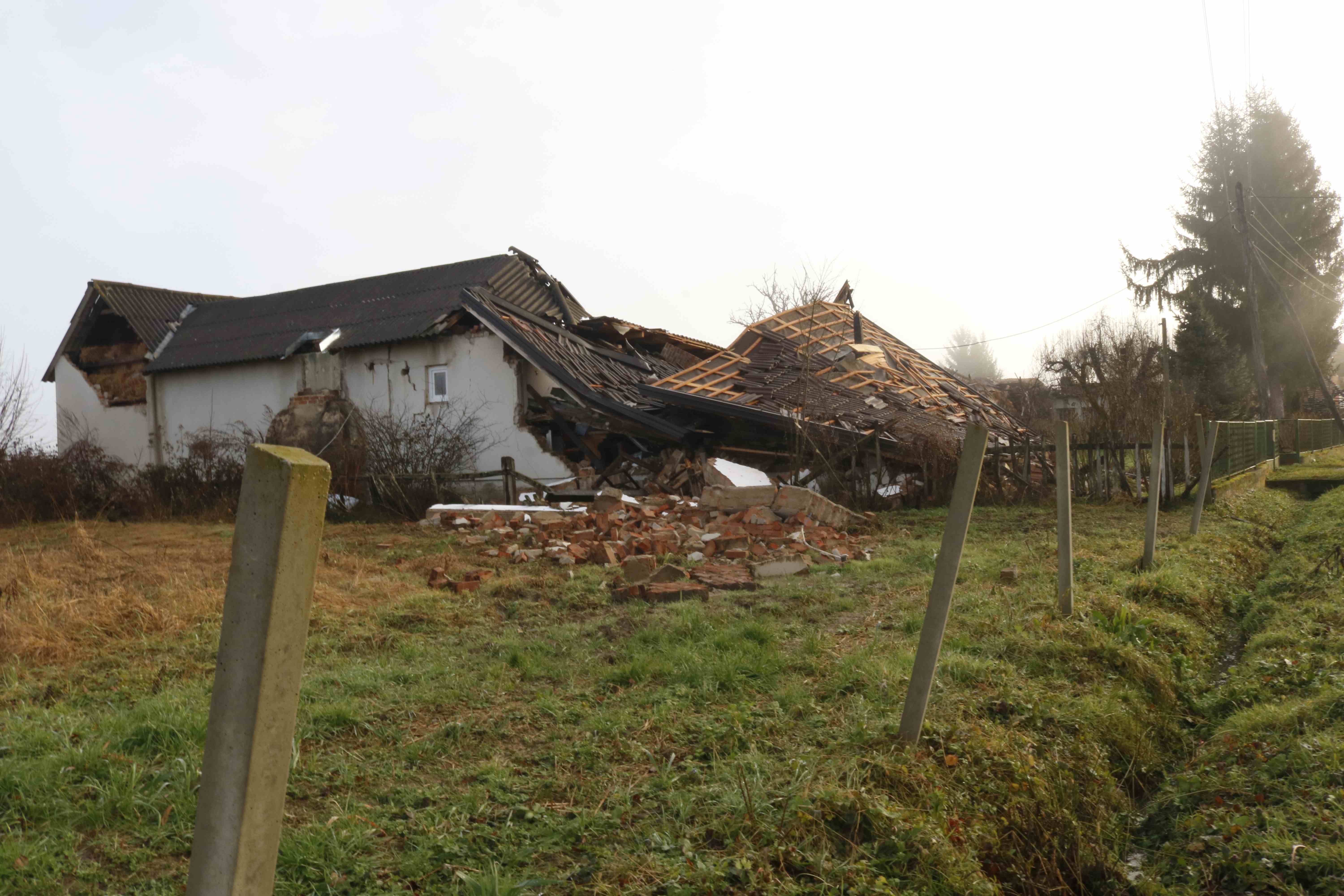
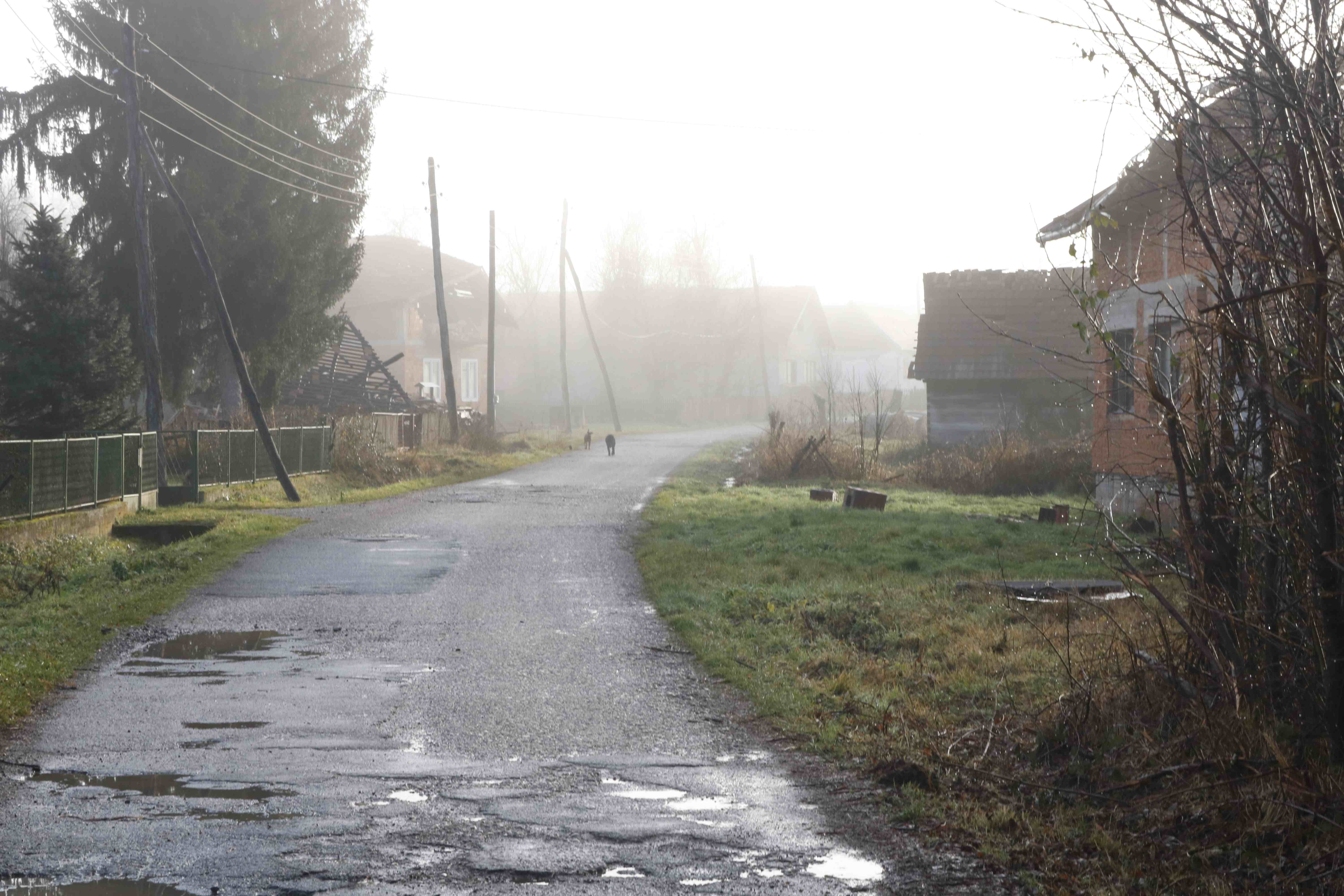
Even the three village dogs left behind padded around the wet road in silence
Glina

Croatian firefighters walk heavily through the mist-filled streets of Glina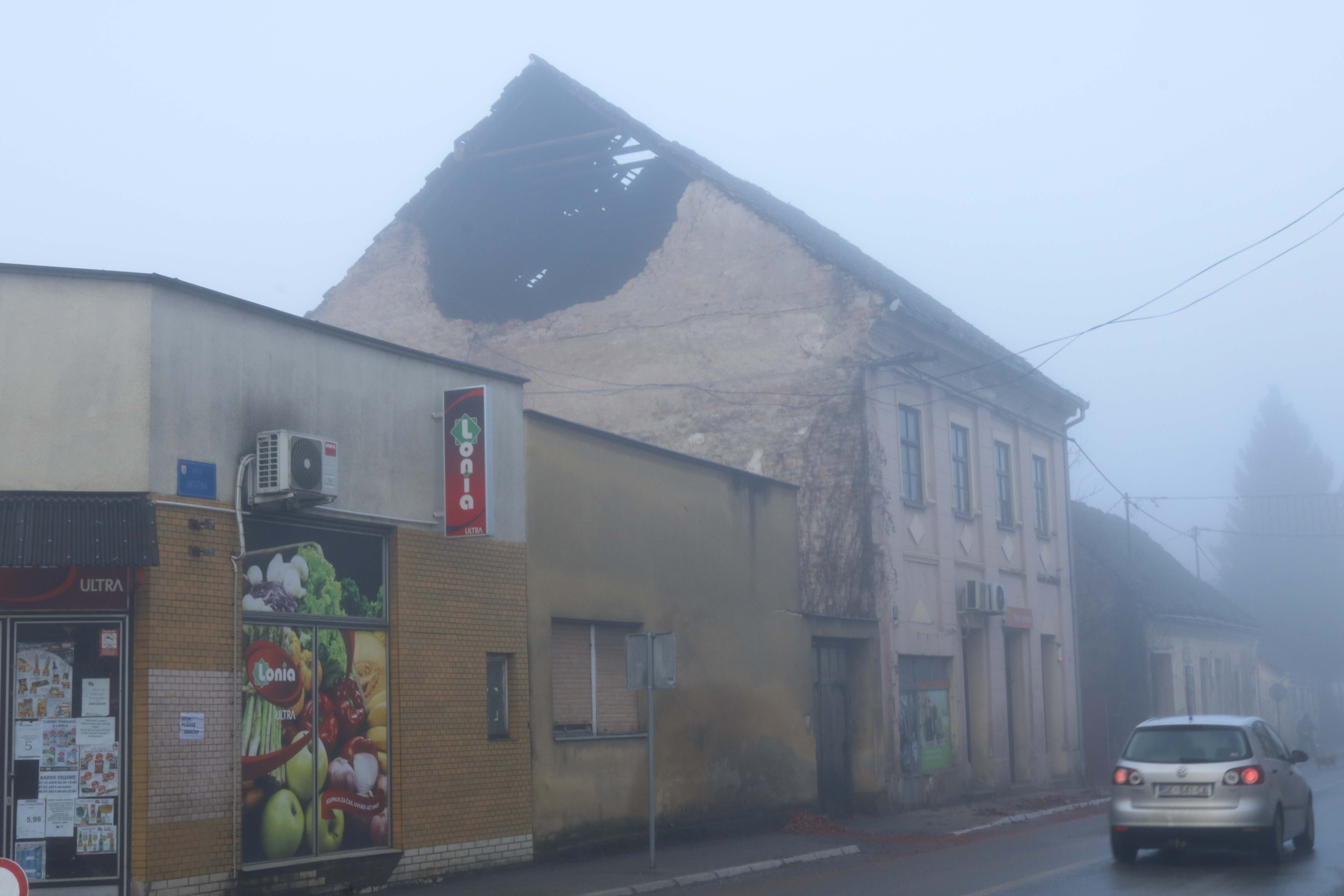
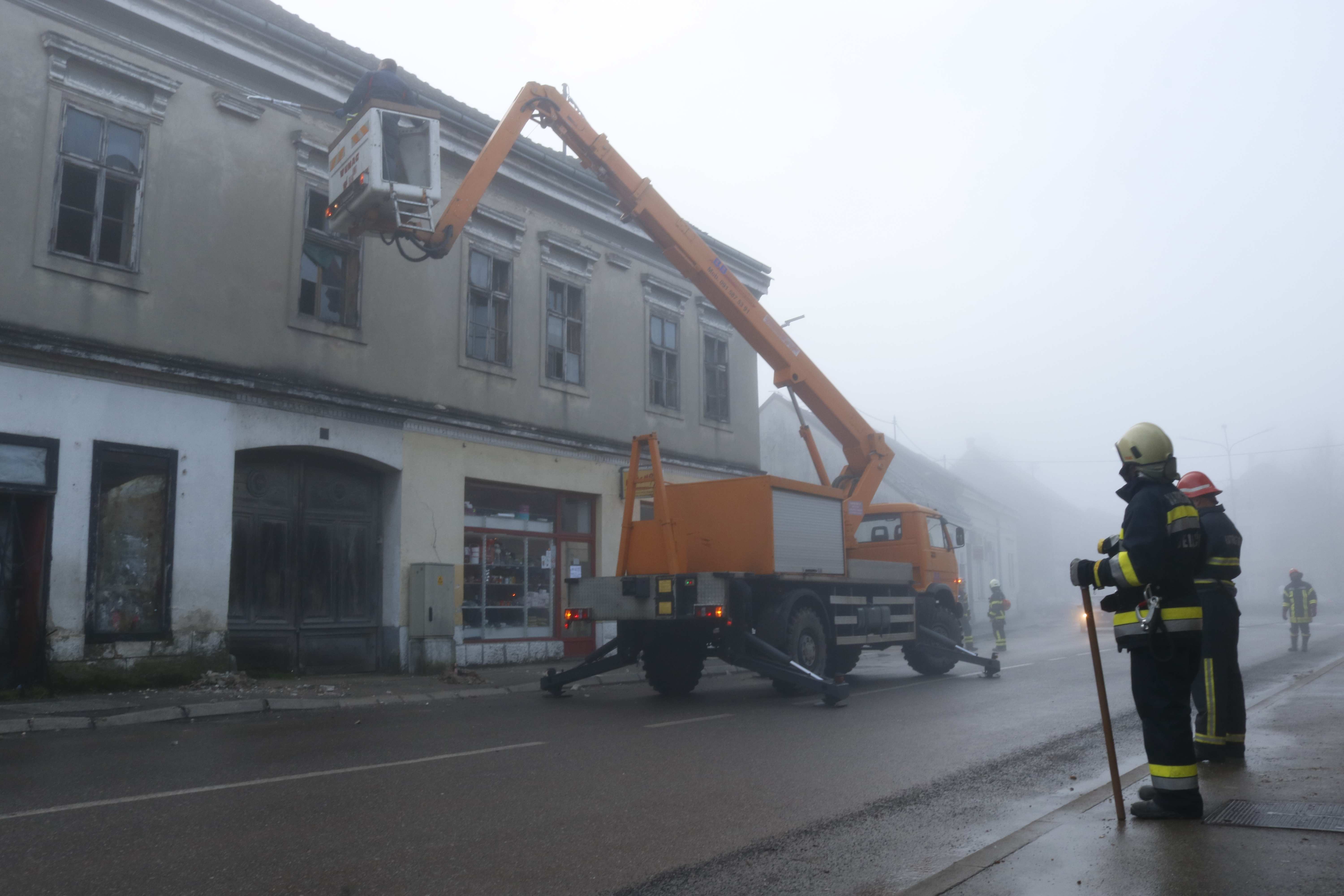
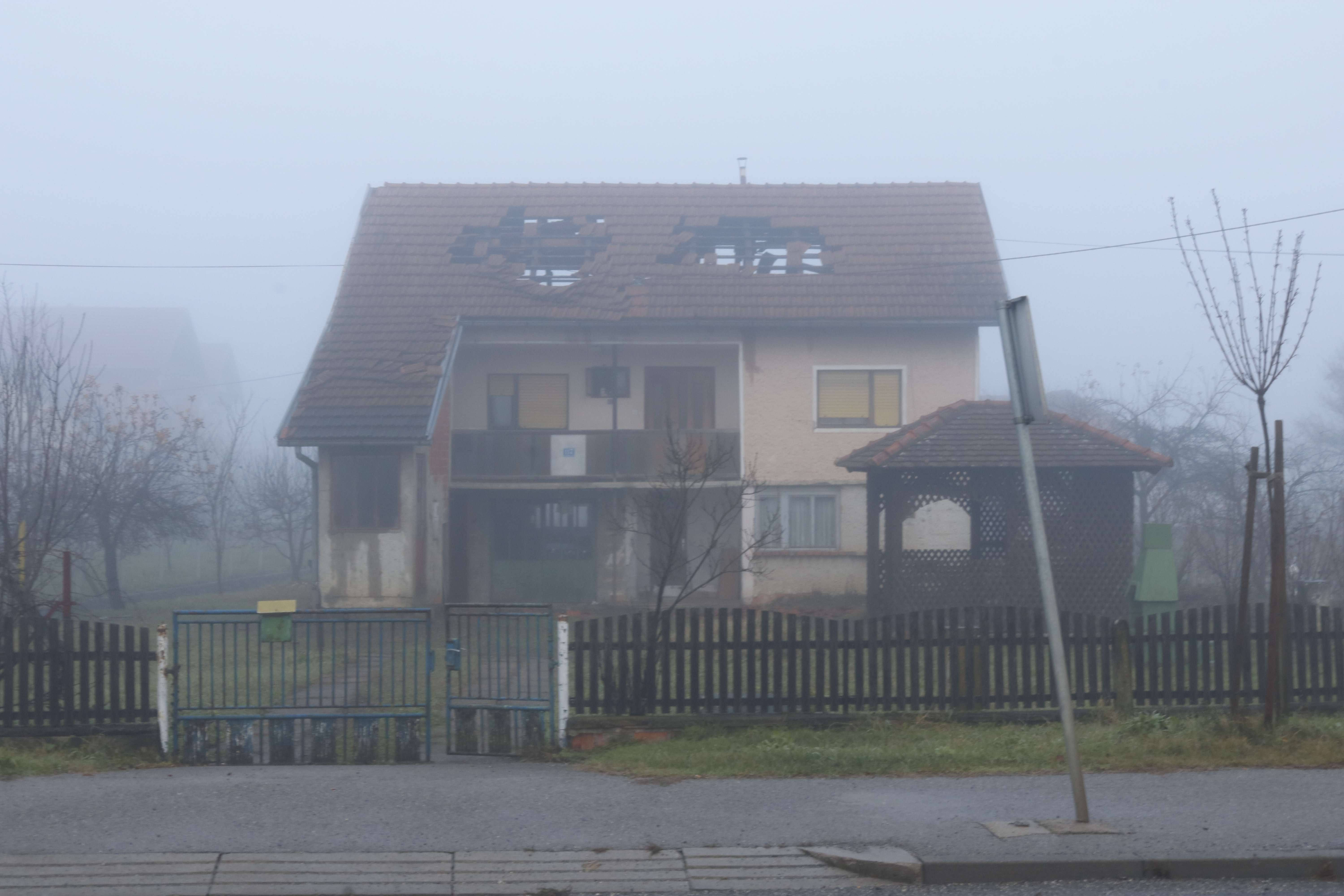
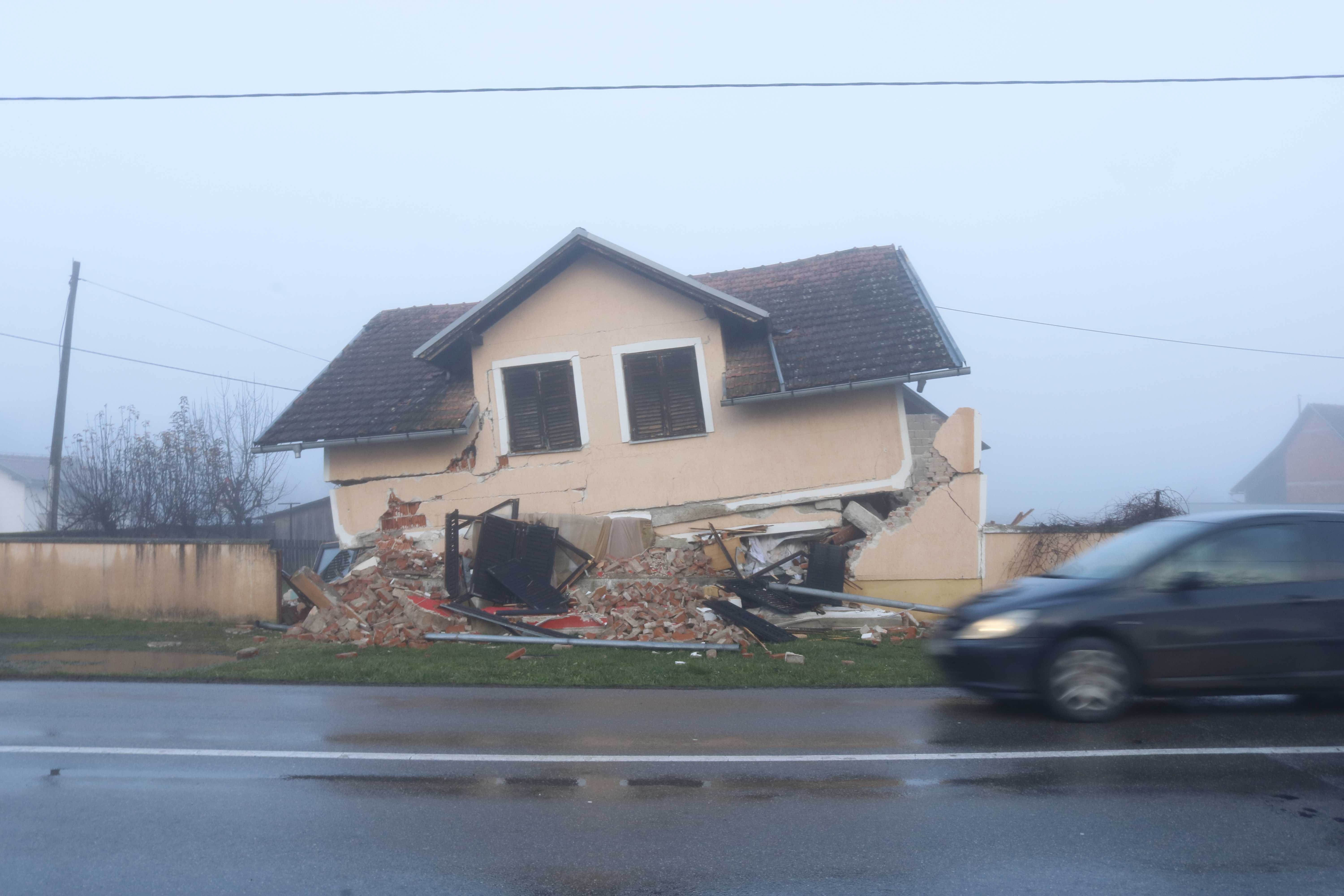
The entire upper floor of this house had collapsed, crushing completely the floor underneath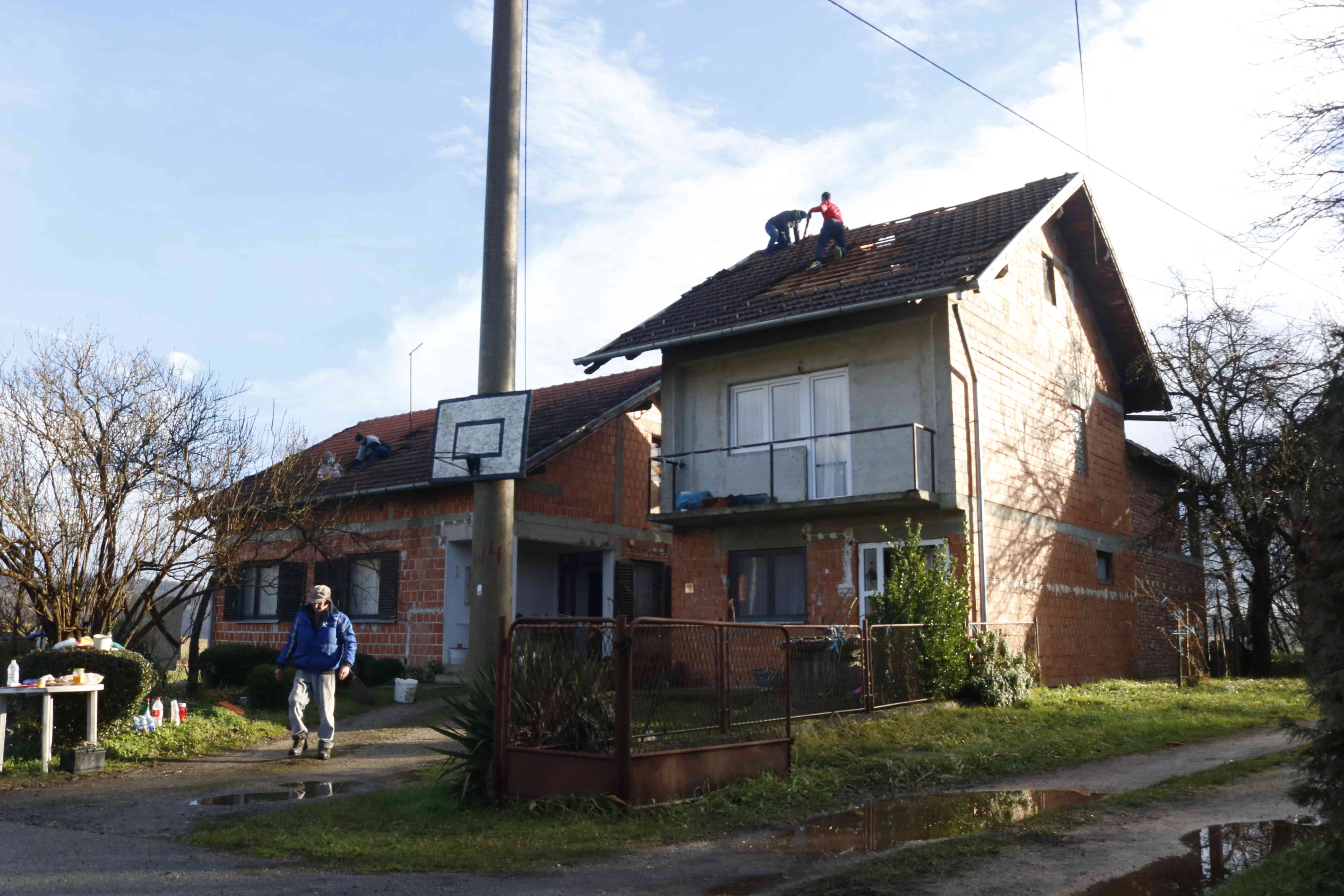
Volunteers at work on the roofs of two neighbouring houses, between Glina and Petrinja one day after the earthquake. The volunteers had come from all over Croatia
Petrinja one day after the earthquake

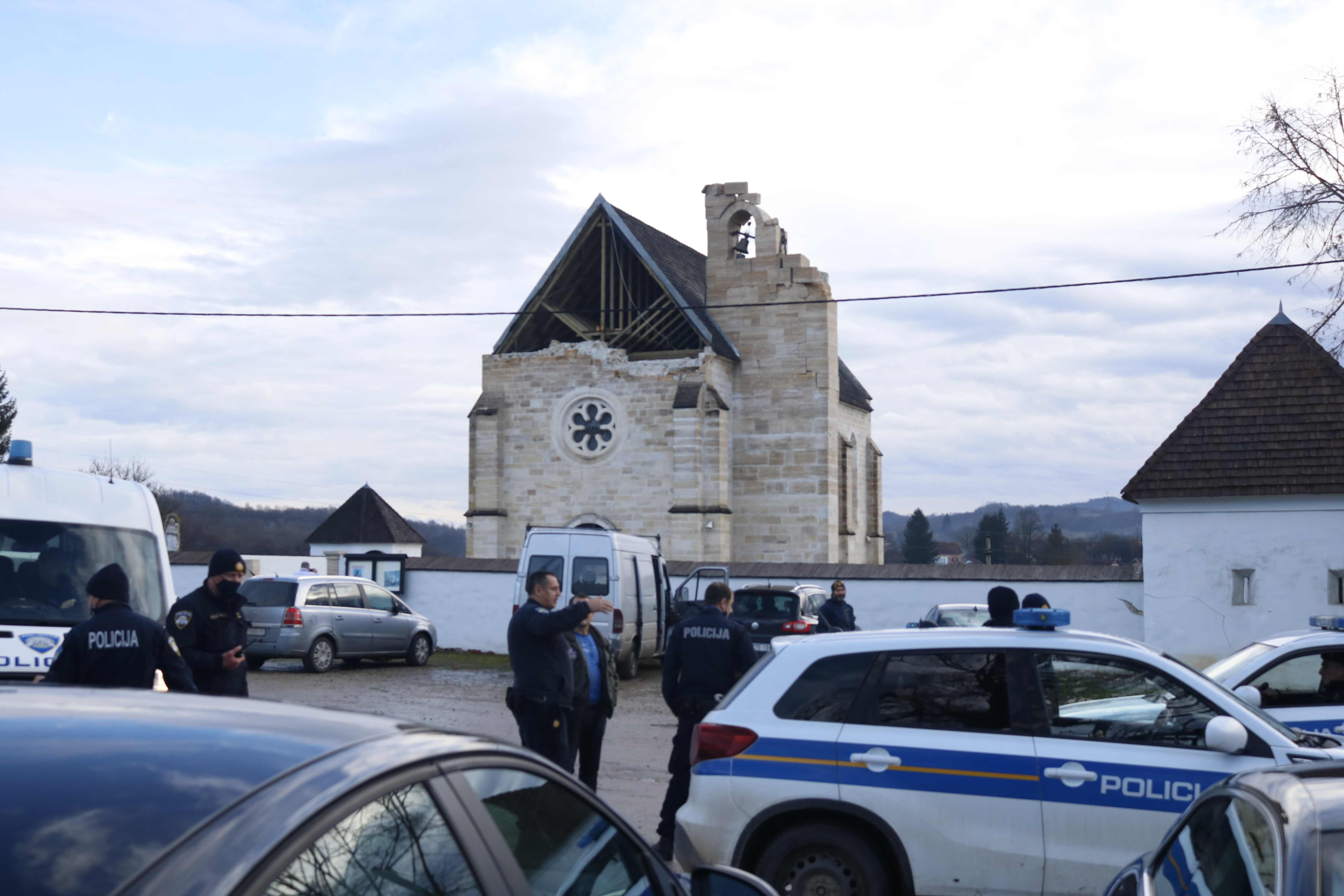
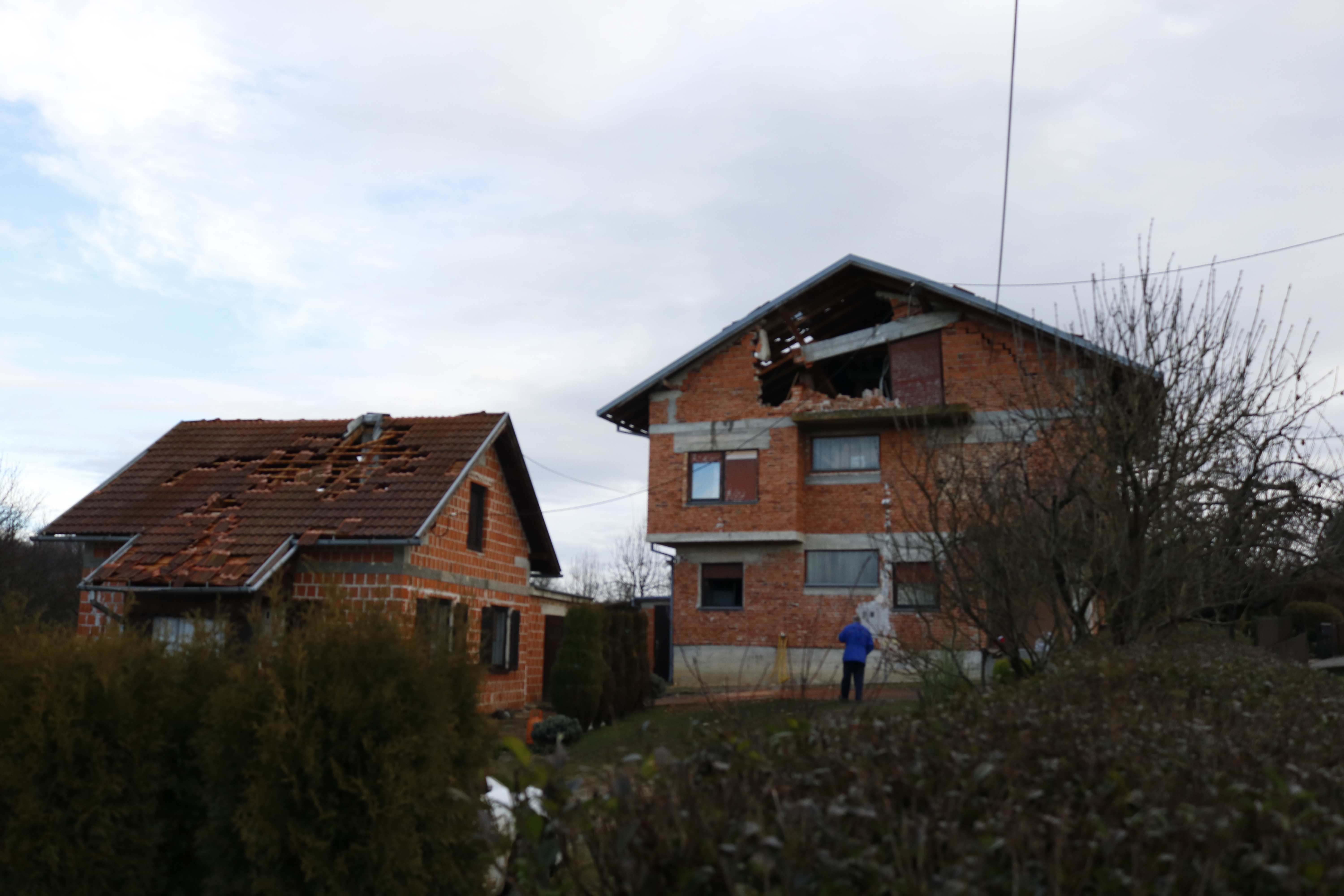
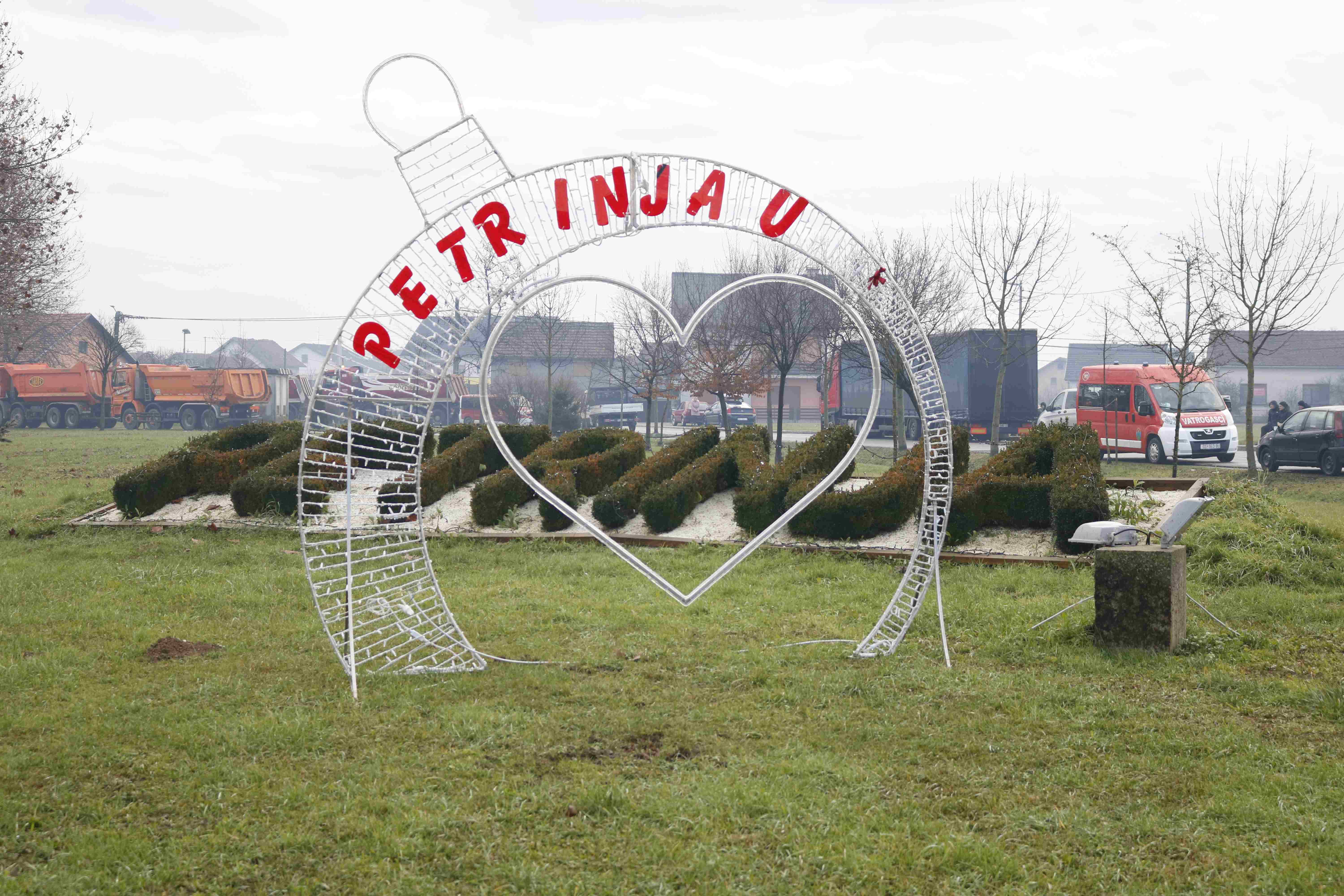
Even in the miserably wet winter weather, the greeting sign to Petrinja one day after the earthquake might still have looked cheery, if you couldn't see all the emergency vehicles in the background. 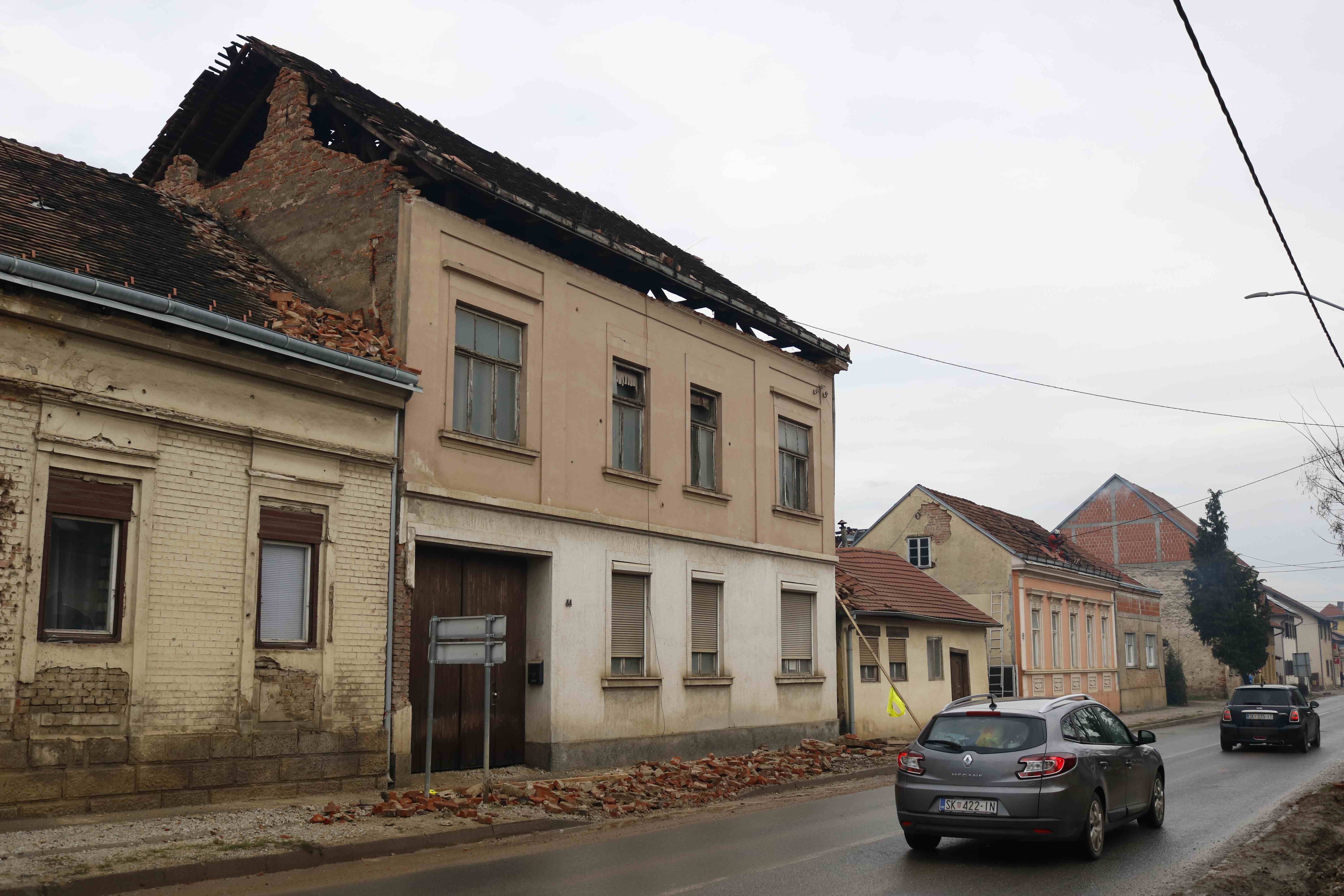
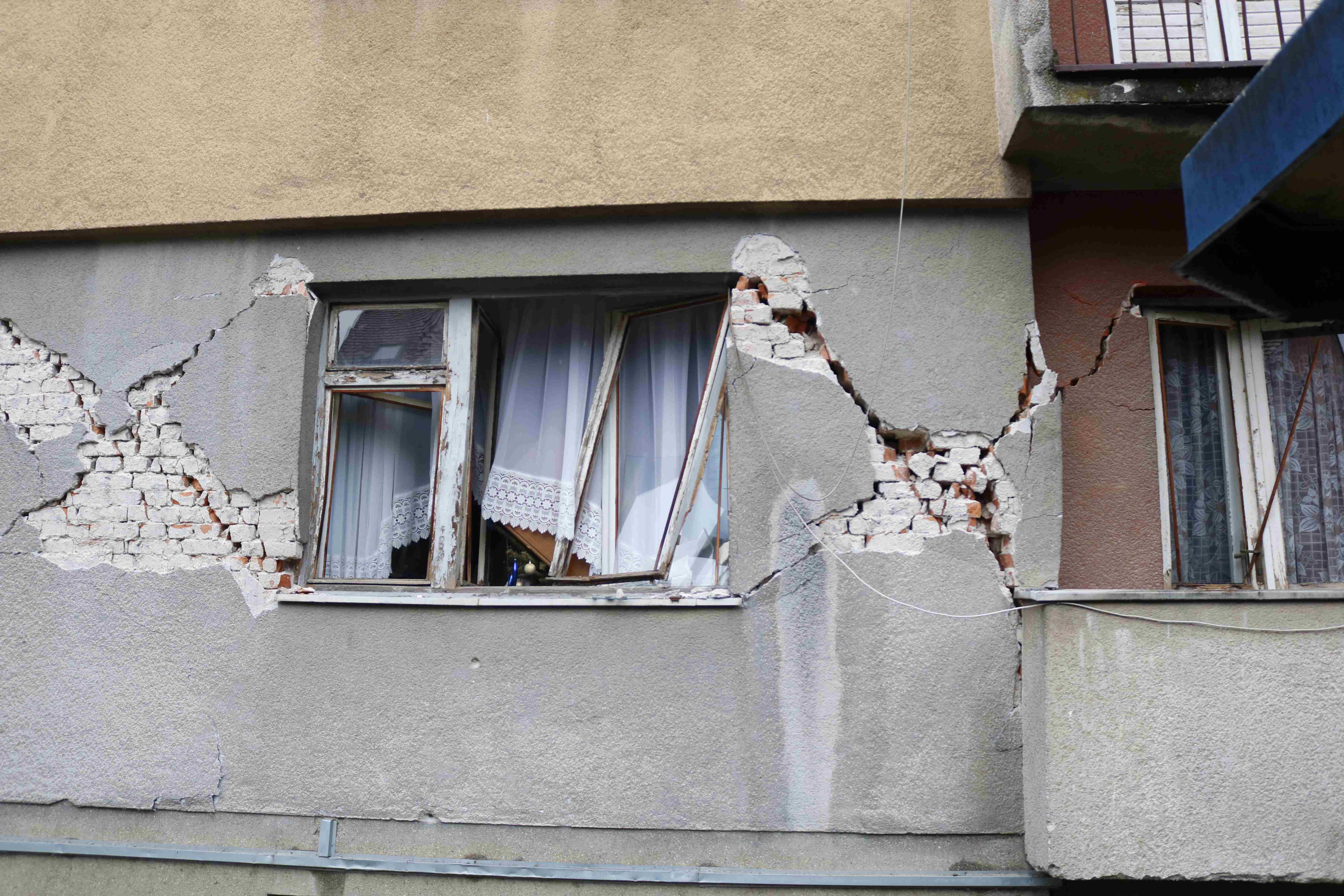

If you didn't know any better, these might look like damaged derelict buildings. But, 24 hours earlier, these had been a row of thriving storefronts, right in the centre of Petrinja one day after the earthquake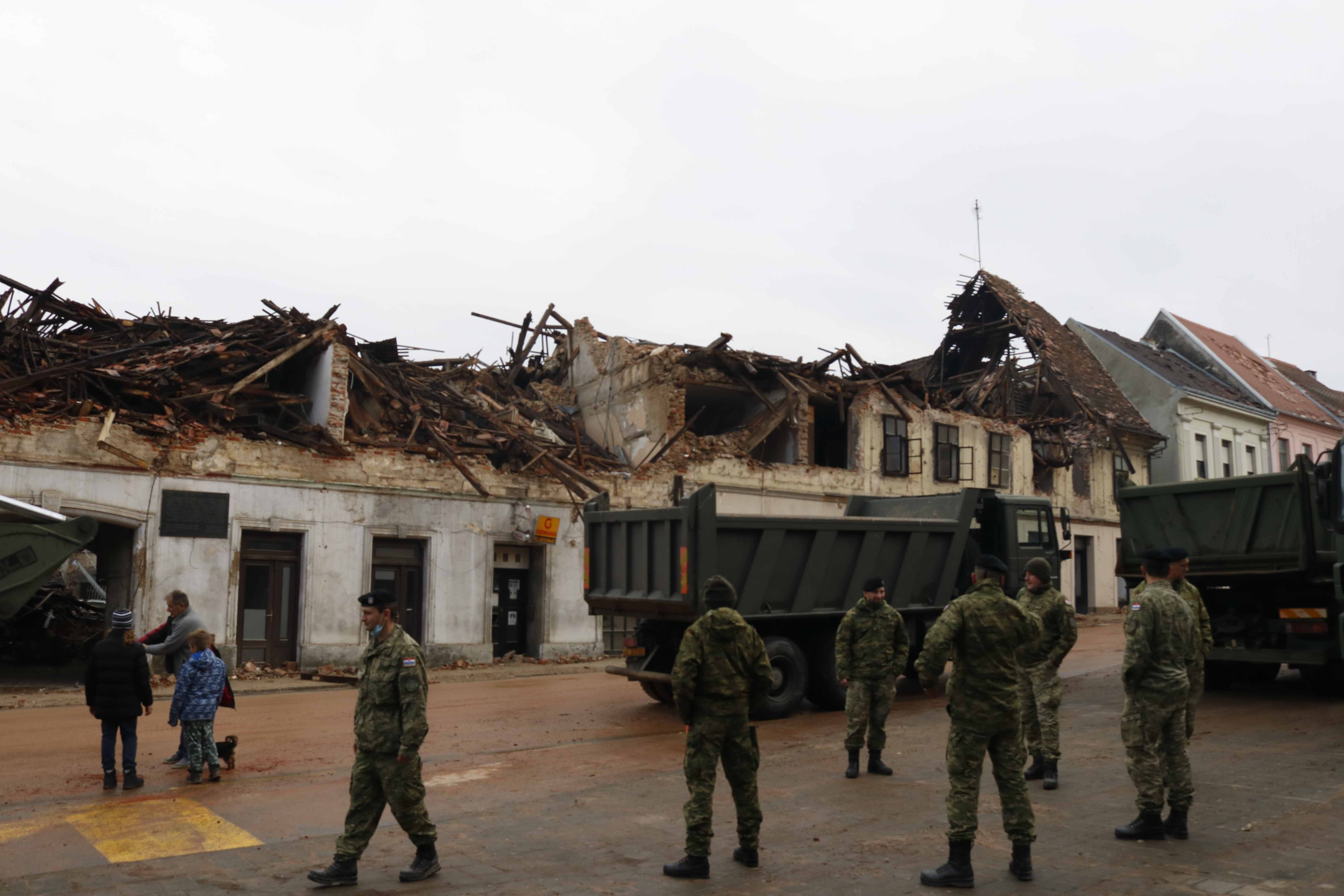
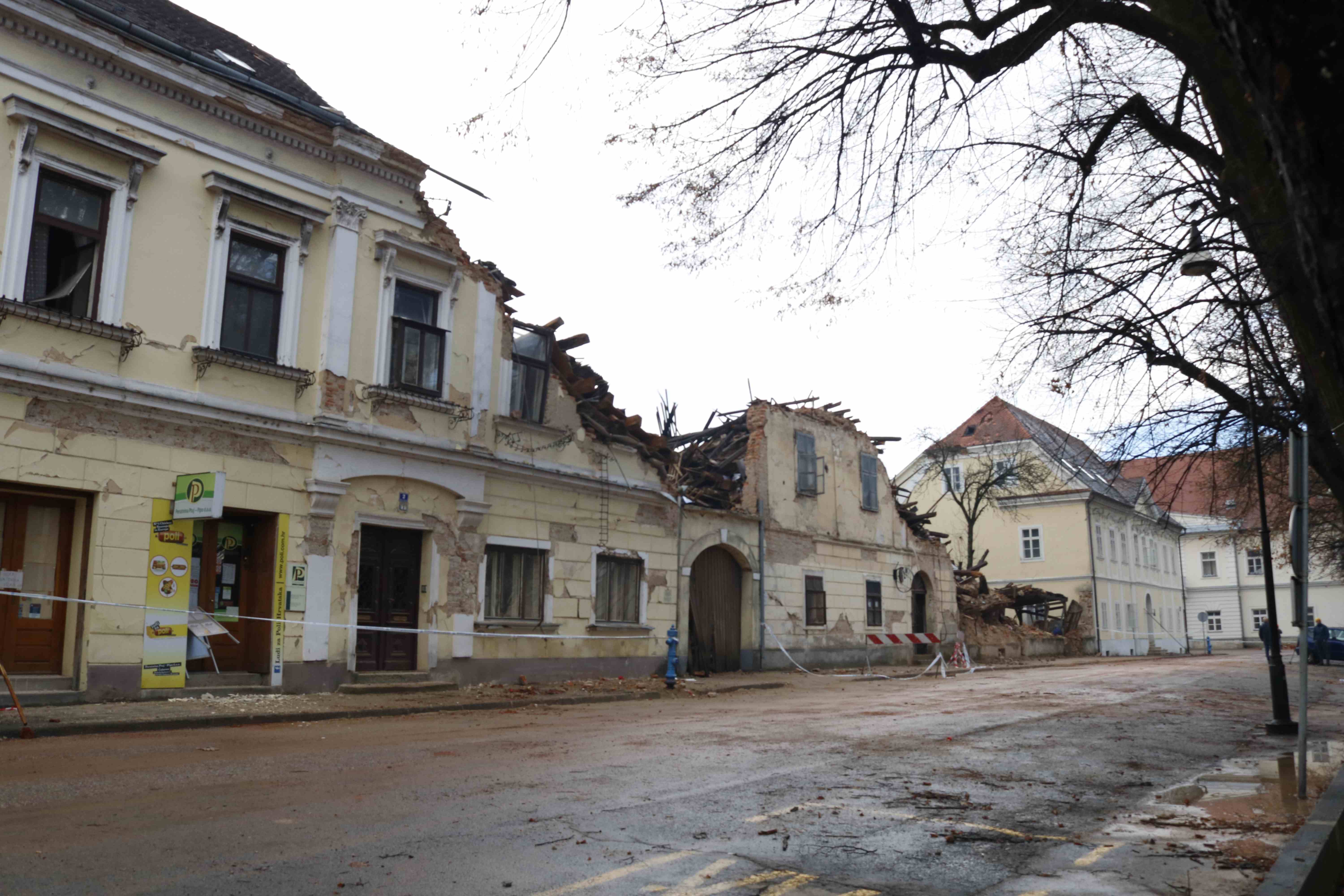
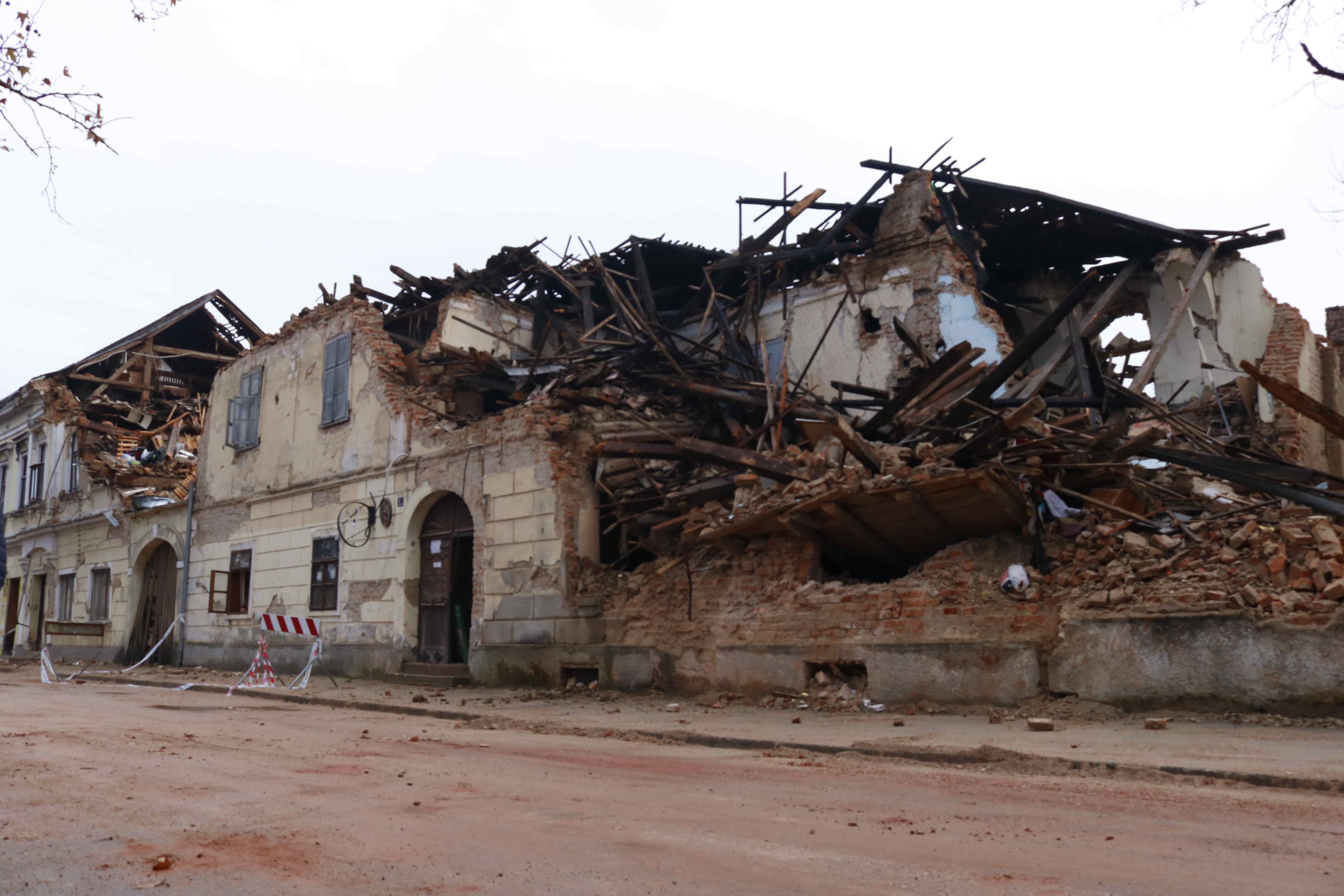
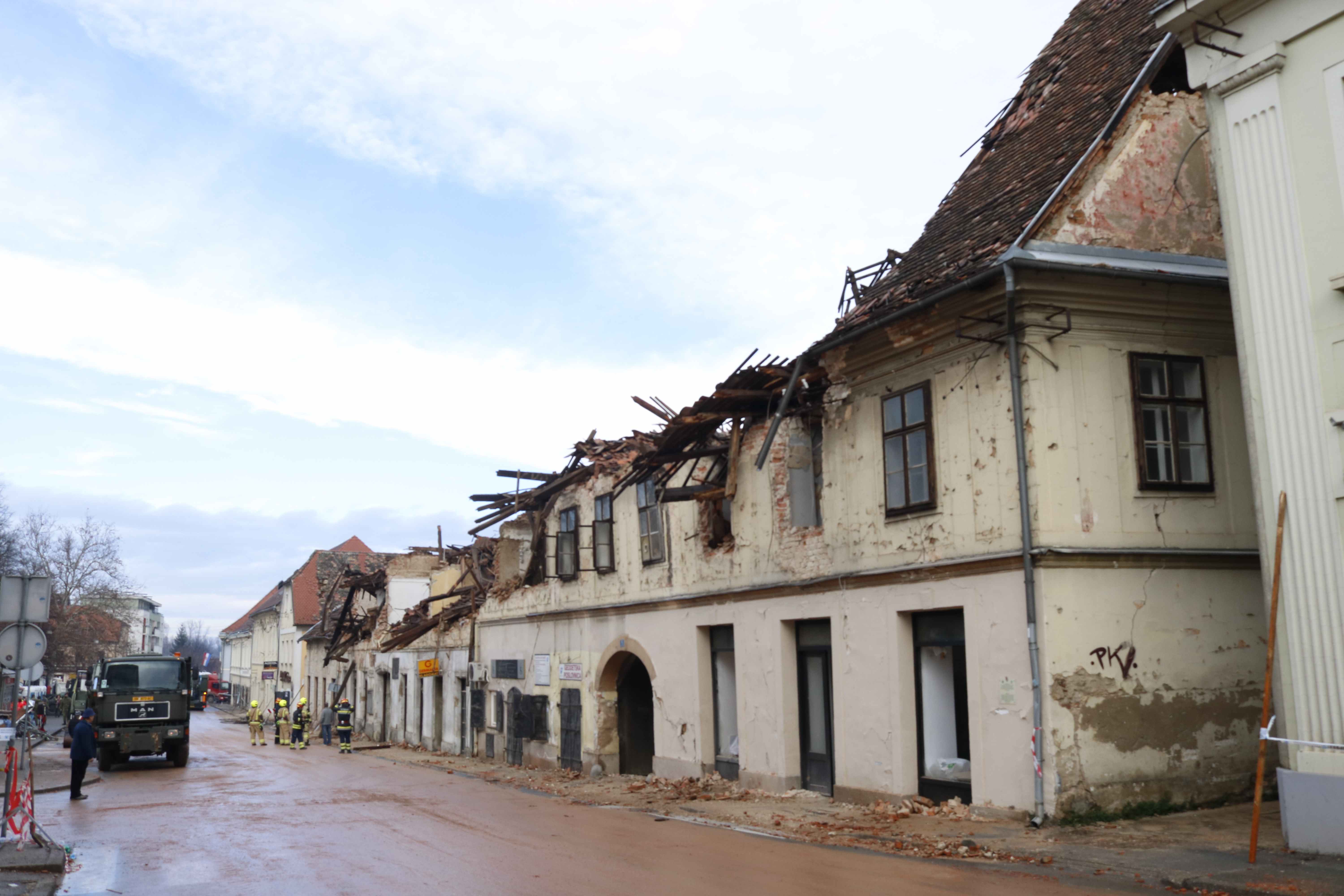
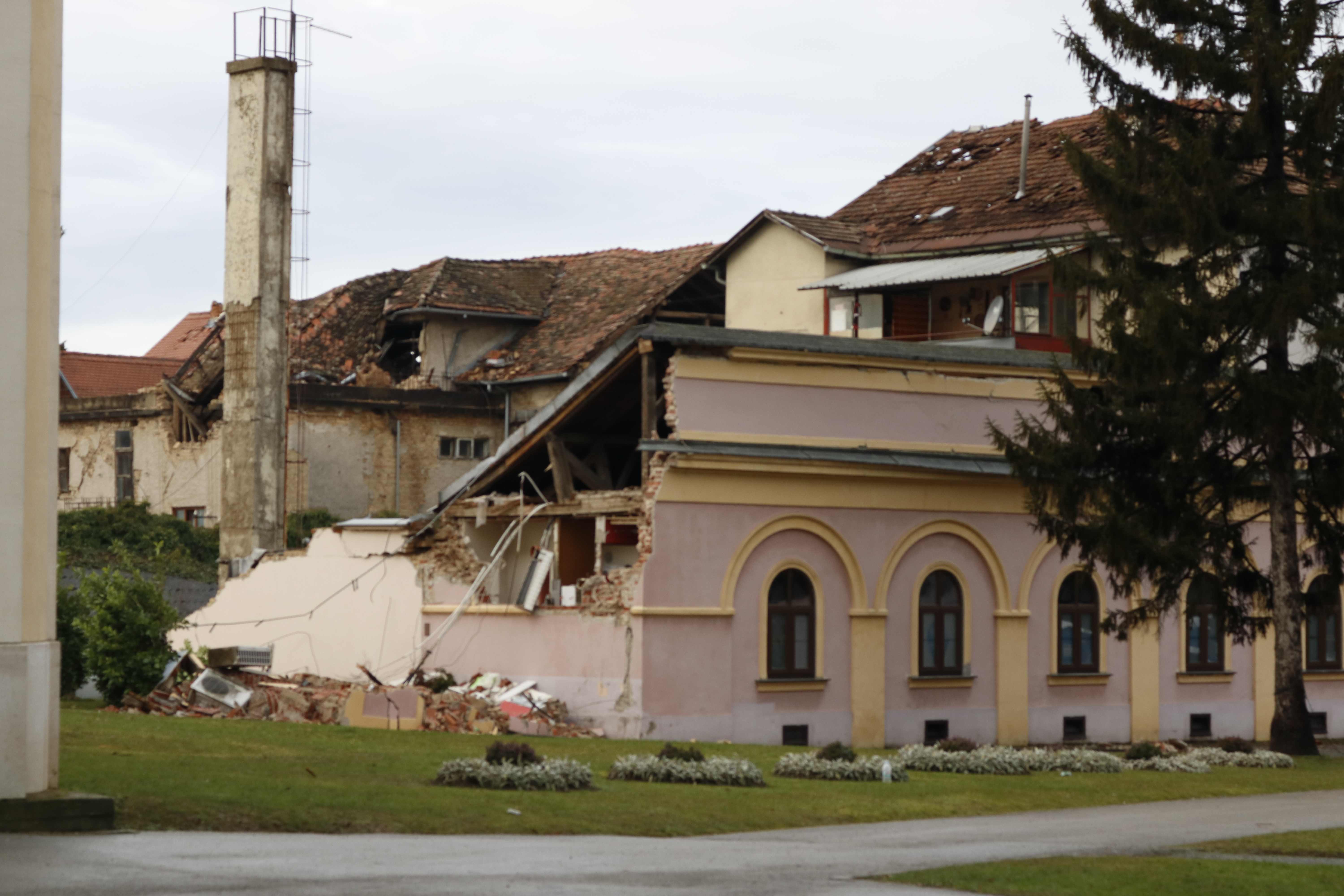
Sisak

Damage to the train station in Sisak. A considerably larger city than Petrinja one day after the earthquake, not one business we passed was working - no supermarkets, no fast-food restaurants. Nothing. Groups of teenagers roamed the streets with nothing to do and nowhere to go
Zazina

The Parish church of St. Nikola and Vida, Žažina near Petrinja one day after the earthquake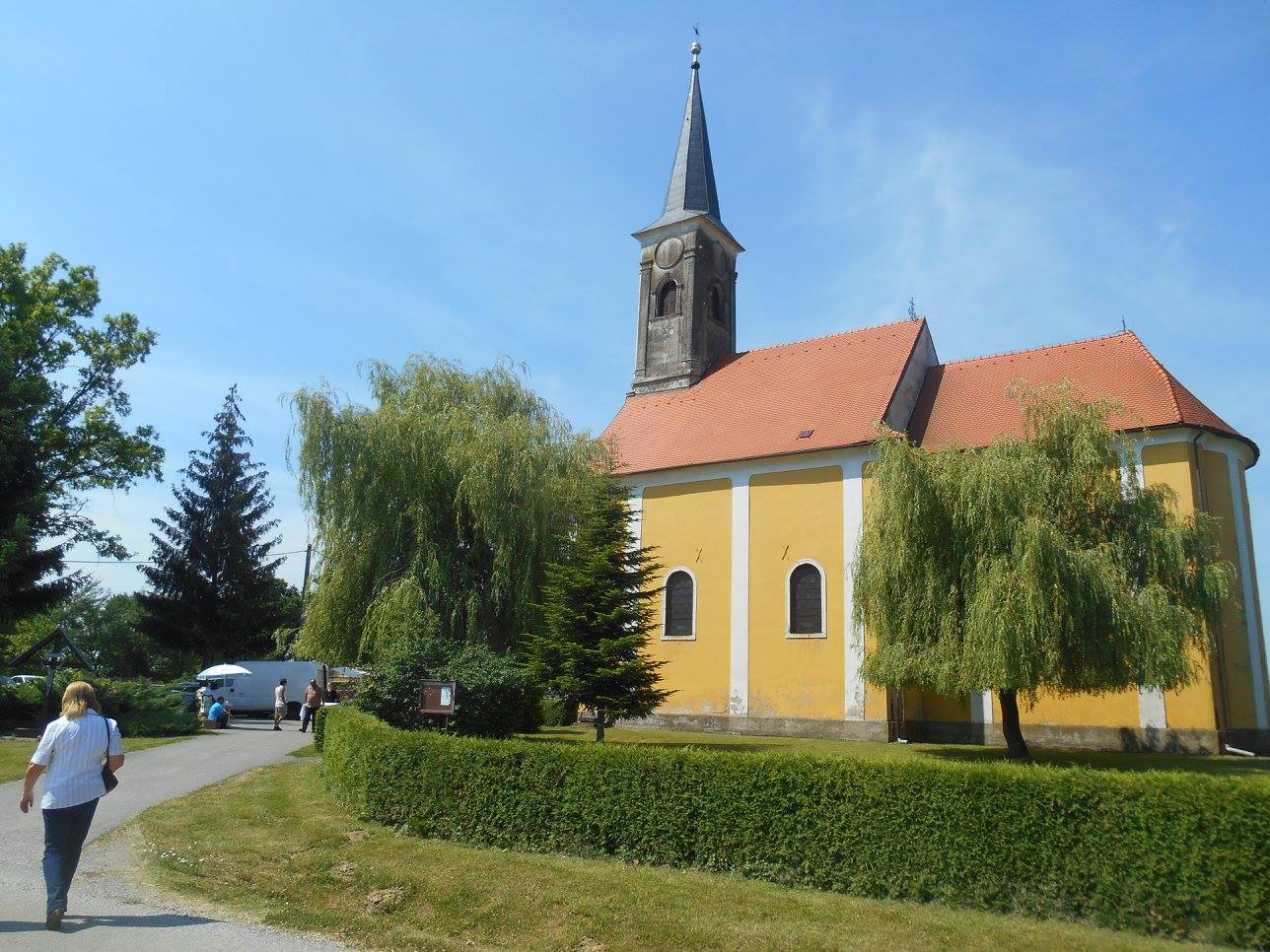
This is how the church had looked just one day earlier. A couple of metres from the church, remnants of the fire that parishioners had gathered around on Badnjak (Christmas Eve). We later learned that the church organist had been cleaning the organ when the earthquake struck, and tragically he was killed. 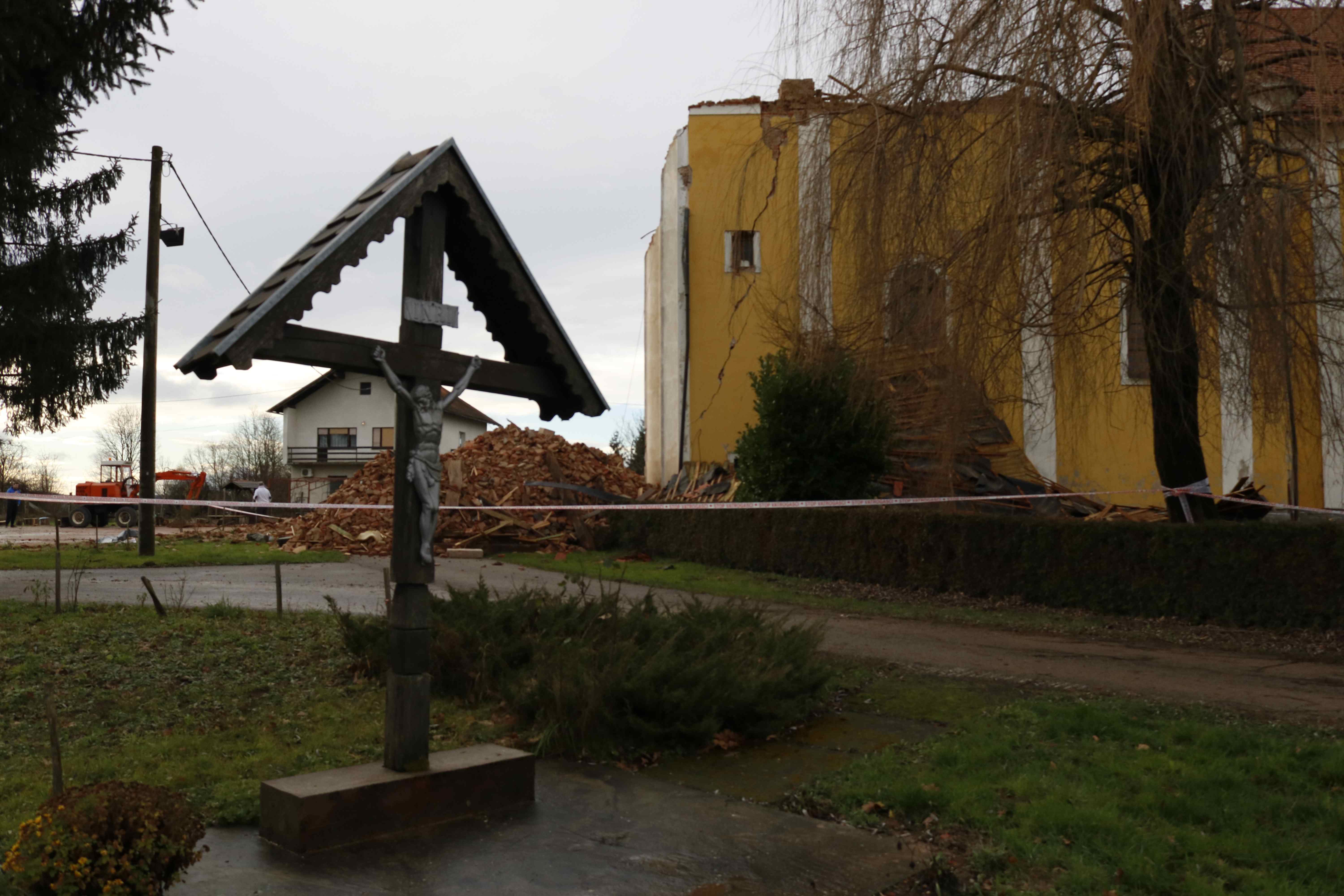
Photo of the Parish church of St. Nikola and Vida, Žažina courtesy of the church, all other photos © Marc Rowlands
Education Minister: Some Schools Affected by Earthquake Have to Be Rebuilt
December 31, 2020 – After visiting schools in Sisak-Moslavina County on Wednesday, Science and Education Minister Radovan Fuchs estimated that some schools would have to be rebuilt.
Besides, as Hina reports, minister Fuchs said that some schools would be able to be restored.
"The situation in schools is bad. In Petrinja, some schools will have to be completely demolished, and some will be rebuilt. I don't know how fast schools will be rebuilt. A good part will have to be built anew," said the Minister.
More schools require complete construction
In the Sisak-Moslavina County, there are 53 schools (37 primary, 13 secondary, and three music) attended by a total of 14,705 students, and 21 kindergartens attended by 3,489 children. Due to the earthquake, five schools required complete construction, nine were significantly damaged, and 13 schools could be used with repairs.
The earthquake damaged the First Primary School in Petrinja and the High School located next to it. There have been significant collapses there, and they will, therefore, need to be rebuilt.
Although it was first assumed that five schools in the Sisak-Moslavina County would need to be rebuilt, the number is slightly higher. Namely, in addition to the two mentioned Petrinja schools, more schools also require complete construction: the Fran Lhotka Music School Sisak, the Sisak Vocational School, the Farkašić and Letovanić Regional Schools of the Mladost Primary School from Lekenik, the Ivan Goran Kovačić Primary School from Gora, and the Nebojan Regional School.
Students in Sisak won't be able to attend college
The Minister also visited the Glina High School, where the energy renovation has started from the outside, which will most likely be renovated.
In addition to that school, the schools that have significant damage are: the Sisak Gymnasium, Katarina Zrinska Mečenčani Primary School, both Viktorovac Primary and High School, Ivan Kukuljević Primary School, Sisak School of Economics, Budaševo-Topolovac-Gušće Primary School (Topolovac), Dragutin Tadijanović Primary School (Mošćenica Regional School), and Mate Lovrak Primary School in Petrinja.
Many other schools are damaged but have mostly cracked glass, smaller cracks, and broken furniture.
At the Faculty of Metallurgy in Sisak, the University of Zagreb, which is attended by 141 students, the estimated damage is eight million kunas. The estimated damage at the Faculty of Teacher Education, the University of Zagreb, which is attended by 600 students, is 1.5 million kunas. Teaching at both faculties will not be possible until the end of the summer semester.
Fuchs said funds for school reconstruction would be withdrawn from the European Solidarity Fund.
"Preparations need to start immediately so that the reconstruction can begin as soon as the funds are approved," he stressed.
'Luckily there were no children in schools'
When it comes to involving students in teaching, the Minister points out that all options will be examined.
"We will try to see all the options that are most acceptable and best, primarily for students. We will know that when everything is consolidated in a few days," the Minister said, adding that now, it must be identified where the students are.
"Luckily, in the accident, there were no children in the school. Now we will see where they will be accommodated," the Minister said.
Minister Fuchs visited the earthquake-stricken Petrinja, Sisak, and Glina with the County Head of Education Darian Vlahov, Petrinja High School Principal Milan Orlić, Dragutun Tadijanović Primary School Principal Davor Miholjević, Faculty of Teacher Education Dean Siniša Opić, the Vice-Dean Marko Badrić, and Glina High School Principal Marija Novosel.
Follow our live updates on the situation in Croatia's earthquake-hit areas here; find out how you can donate here.
Istria Sends a Convoy of Caravans to Petrinja: 'This Is Just the Beginning'
December 30, 2020 – For the part of the population who have lost a place to sleep, Istria sent a convoy of caravans to Petrinja and other earthquake-ravaged surrounding places.
After the Istrian firefighters went to help the injured in Petrinja and its surroundings yesterday, today Istrians showed a big heart again. Namely, in front of the Žatika hall in Poreč, a convoy of caravans headed towards the earthquake-affected areas.
As Jutarnji.hr reports, the caravan owners from Istria sent 16 of them, equipped, to Petrinja and Glina on Wednesday, so that part of the Petrinja and Glina residents could have a place to sleep.
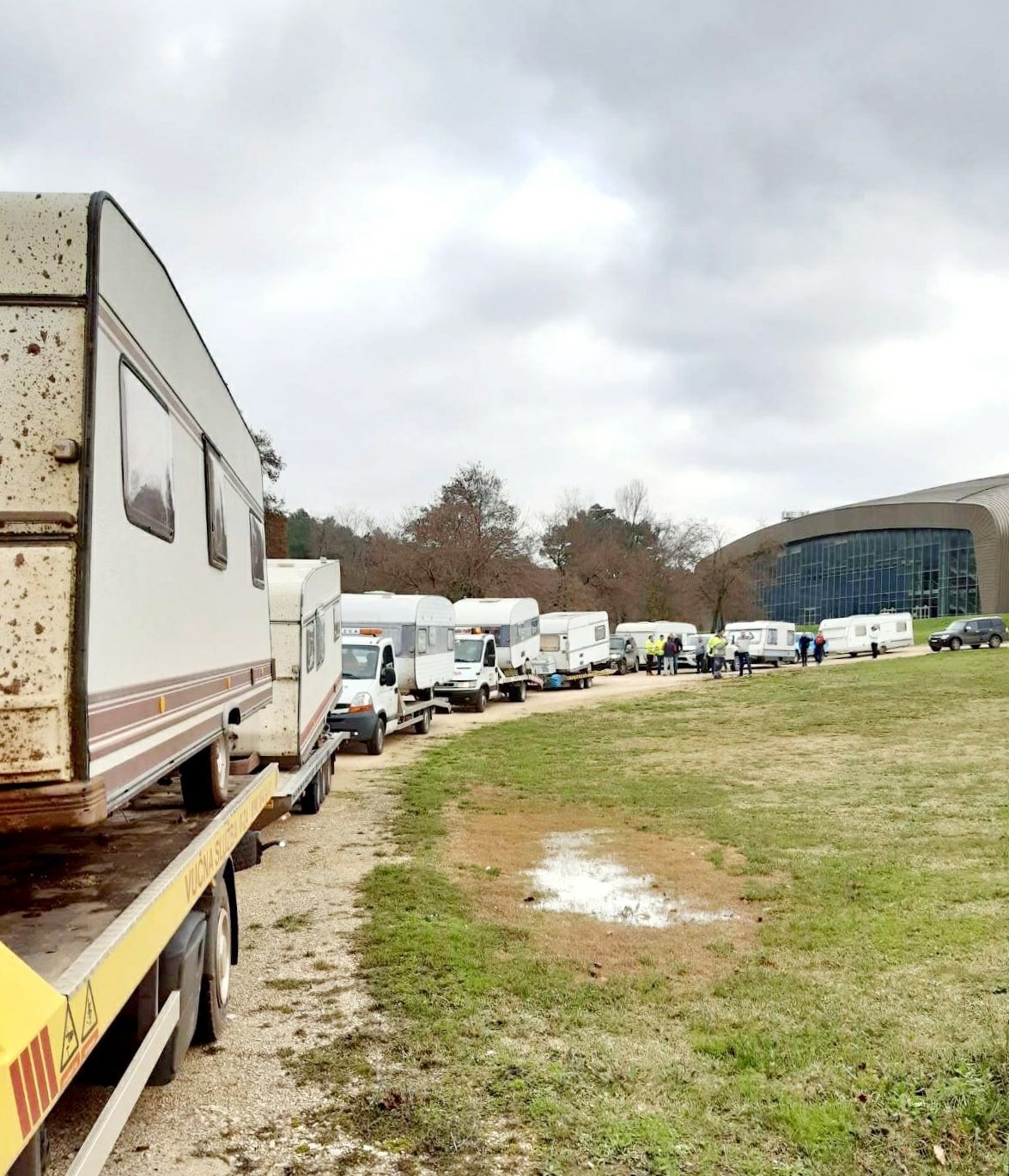
A convoy of caravans headed from Istria to Petrinja / Photo: the City of Poreč - Parenzo
This humanitarian action was initiated by Denis Bernobić from Poreč, the owner of a local towing service, together with the owner of a small family camp Polidor near Funtana, Adrian Ukušić. According to both of them, whom Jutarnji found in a convoy near Rijeka while transporting the first contingent of houses, this is just the beginning.
"Private owners of caravans responded to the action, and among them are even some Germans who have their caravan in the Bijela Uvala camp near Poreč. They called me and said they were giving their caravan away with all the papers. People immediately started appearing like crazy from all over Istria, so this is only the first contingent," says Bernobić, who set off for Petrinja and Glina on Wednesday together with colleagues with eight trucks, seven jeeps, and two vans.
They are driving caravans directly to people who were left without roofs and slept outside last night, and they have everything – toilets, beds, and heating.
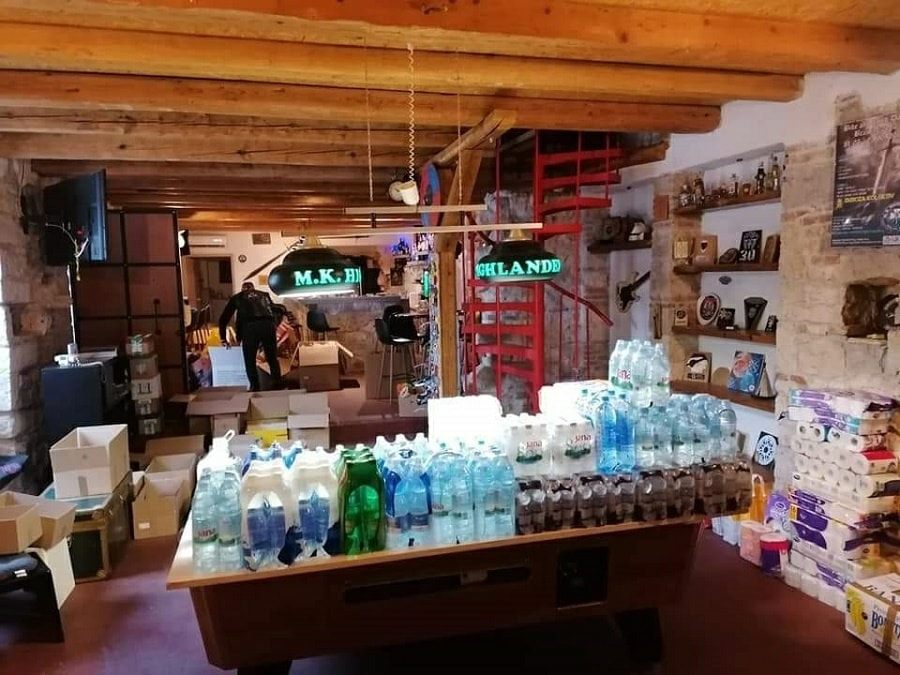
The caravans are equipped with food and drinks / Photo: the City of Poreč - Parenzo
"The caravans are also full of drinks and food. There are even wood and wood stoves inside. The van is full of bedding. Everyone helped us to equip them, and the Red Cross from Poreč and Rovinj were especially active, and I thank them for that," says Bernobić, whose phone keeps ringing.
"They keep calling me across all platforms because people want to give away their caravans. So we will drive towards Petrinja and Glina in the coming days as well. We expect to take about 40 caravans to the affected areas in the next few days. Colleagues from Koper and Slovenia who have a towing service also call me to help us take the campers, "points out Bernobić, who took similar action with Ukušić when Gunja was flooded.
The owner of Polidor was also with him in convoy, and he gave two of his camps. Mayor of Poreč Loris Peršurić also supported Bernobić.
"These are all donations from citizens from all over Poreč and beyond. Poreč Red Cross, local committees, and numerous associations and initiatives still collect all kinds of help. This is an unprecedented tragedy. The minimum we can do is help people whose homes have been destroyed, who are terrified, and whose horrors, unfortunately, are not over yet," Mayor Peršurić told Hina.
Follow our live updates on the situation in Croatia's earthquake-hit areas here; find out how you can donate here.
Schools in Sisak, Petrinja and Glina Damaged, Five of them Completely Destroyed
December 30, 2020 – Due to yesterday's devastating 6,3 magnitude eathquake, schools in Sisak, Petrinja and Glina are damaged, and five of them are entirely unusable.
As Hina reports, Minister of Science and Education Radovan Fuchs said today that, in addition to the five unusable schools, nine of them would be able to be repaired, and thirteen will be able to function. Also, Minister Fuchs announced that he and his associates would visit the area today.
More than 5,000 students left without school buildings
"Five schools are completely unusable, nine will be able to be repaired, but serious reconstructions are needed. We have thirteen schools that will be able to function," Minister Fuchs told reporters ahead of a government session at the National and University Library.
Minister added that 3489 students were left without a school building in Sisak, and 1843 students in Petrinja. They will plan on how to organize the classes.
As TCN has learned, the First Primary School in Petrinja, located in the very center of the city, which was hit hard, was utterly demolished. Classes can no longer take place there because the roof of the building has fallen to the first floor of the school.
Petrinja High School's principal says he and three employees were at the school at the time of the earthquake. When the quake struck, the building began to collapse. They moved to a safe place and then went down to the schoolyard. The ground beneath them was still swaying. The walls were damaged and cracked. According to the principal's estimate, the entire school will need significant reparation.
'The return will not be easy'
The earthquake also caused great damage to the High School in Glina.
"At the time of the earthquake, several employees found themselves at the school and, thank God, came out unscathed at the last minute. I am afraid that the return will be neither easy nor so soon. The photos say it all. After visiting most of the classrooms and offices, we will need help," said Glina High School's principal on the school's Facebook page.
She was hit by an earthquake in the center of Glina, 15 minutes after she left her office at the school. Unfortunately, the retired school janitor and his son are among the dead.
The principal of Viktorovac High School in Sisak says the earthquake was really terrible.
Zagreb schools to accept students
As Jutarnji list reports, the head of the Zagreb City Office for Education, Ivica Lovrić, said that yesterday's earthquake did not cause significant damage to school buildings in Zagreb.
"All Zagreb schools will be able to accept students on January 18. The good thing is that after the earthquake in March, we rebuilt most of the damaged school buildings, so we have no major damage after yesterday's earthquake. We hope that the epidemiological situation will be such that in the new semester, we will start with model A, that is, school teaching," said Lovrić.
This morning, the structural engineer visited two regional schools in Brezovica, but apart from minor cracks in the walls, there is no damage.
Sister of Mercy Danijela Dinjar, principal of the Women's General Gymnasium, whose buildings are in Varšavska and Gundulićeva streets in Zagreb, confirms that yesterday's earthquake intensified previous damage that has not yet been fully repaired.
"The once walled door and part of the ceiling above the end wall of the building collapsed. Three classrooms are not for use, so in the second half of the year, we will teach in a building in Varšavska Street, and we will renovate the rest when we have the funds," says the principal, whose school is attended by 214 students this school year.
For more on the Petrinja earthquake, follow today's live updates. For more on how you can help, click here.
Croatians in Canada Help People Affected by Earthquake in Petrinja
December 30, 2020 – After yesterday's devastating earthquake in Petrinja and Sisak, help comes from another part of the world. Croatians in Canada initiated a fundraiser action GoFundMe and raised over 70,000 dollars so far!
Yesterday's earthquake encouraged people from all over Croatia to collect food and hygiene supplies for people affected by the earthquake, but also to launch much-needed donation actions. Donations started arriving yesterday from neighboring countries (Macedonia, Serbia, Bosnia and Herzegovina, and Slovenia) and other parts of the world, namely, Canada.
The news of the devastating earthquake centered in Petrinja has galvanized the Croatian community in Canada into action. Mirjana Jerkovic, a very active member of the Croatian community in Canada, organized a GoFundMe fundraiser to collect donations for people affected by Croatia's earthquake.
In less than 24 hours, a GoFundMe fundraiser has raised over 70,000 dollars. This fundraiser is trending in Canada and is currently the 7th largest fundraiser taking place in Canada. Close to 700 people have donated to this worthy cause, from Mississauga, other parts of the Greater Toronto Area, Hamilton, and across Canada.
Mirjana is a long time member of the executive board of the Vatroslav Lisinski Tambura Orchestra of Mississauga, Ontario, and is well known in Croatian folklore circles in Canada. Her husband is a native of Vinkovci.
"Our Canadian-Croatian community is strong and has always helped our Croatian homeland. Let's show our support and donate to those most affected by the horrific earthquake on December 29, 2020. All funds will be donated to families, and we will post delivery! Please share! Bože, čuvaj Hrvatsku," reads her statement at GoFundMe.
Father Marko Štefanec of Holy Cross Croatian parish in Hamilton, Ontario, has produced a video encouraging Croats in Canada to give to those in need due to this earthquake.
"Due to Canadian bureaucracy, it is very difficult for Croatian parishes across Canada to send money outside Canada. Therefore, the best way to help is through these two platforms – fundraisers GoFundMe and Caritas Croatia," says Štefanec in the video below.
You can pay donations via GoFundMe website or through the Caritas Croatia website.
For more, follow today's live updates. To find out how you too can donate money, food, material and humanitarian aid, click here.


